Embroidered Wedding Blankets of Southern Iraq
Maya Ilg, Collector of handcrafted textiles, Switzerland
Annamarie Stockli, Researcher of handcrafted textiles, Switzerland
November 2023
In the South of Iraq, between the Euphrates and Tigris rivers, the Sumerians built some of the earliest known cities. More than 5,000 years ago the legendary Gardens of Eden were said to have been sited there. The ancient places do not exist anymore, but up to the middle of the 20th century the rural population lived a life that had barely changed over the course of time.
In Iraq the blankets are called Izar Al-Samawah, or Al-Samawah rugs. Samawah being a town in the South of Iraq. The embroideries are, however, not the work of city dwellers but were made in the villages, they are tribal art. The word Izar means blanket / cover.
It in this region that the embroidered wedding blankets were made until a few decades ago.
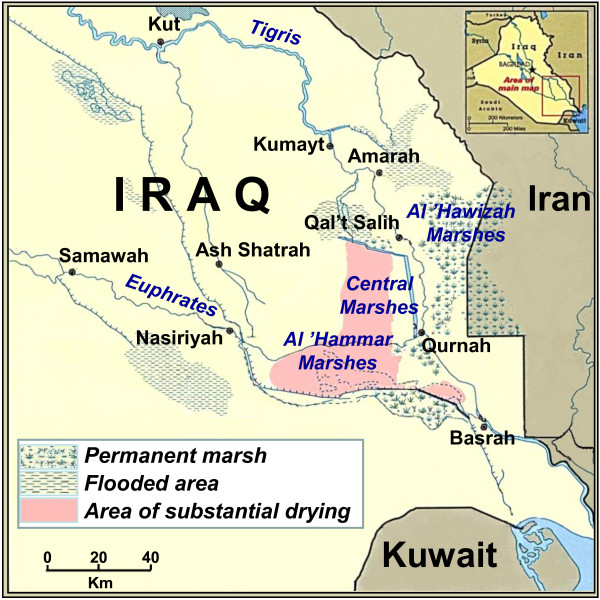
Map of South of Iraq
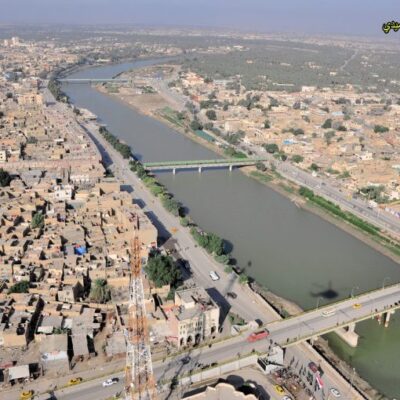
Al-Samawa city. Image source, Muthana Governerate website, photograph by Raad Al-Hamidi
Design Motifs
Some may be influenced by the Roma who are descendants of migrants from India to Iraq more than thousand of years ago, or by the East African slaves who rebelled against the Caliph in the 9th century and fled to the marshes of the south. Later, the influence came from the Bedouins, who represented a cultural ideal to the villagers on the banks of the big rivers and in the marshes.
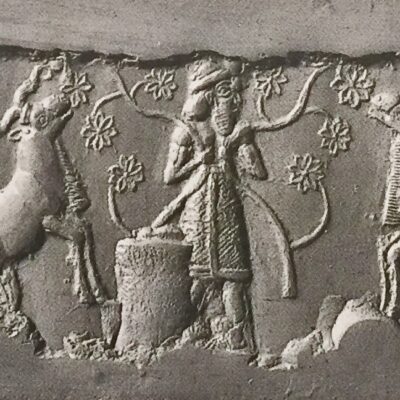

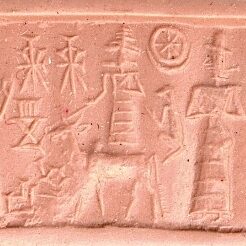

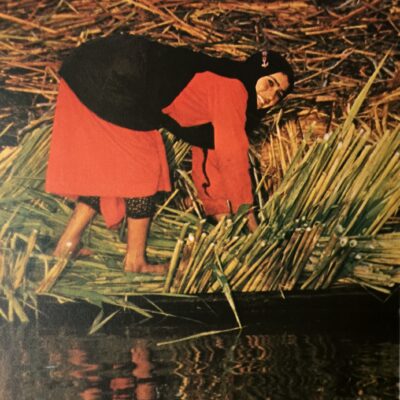

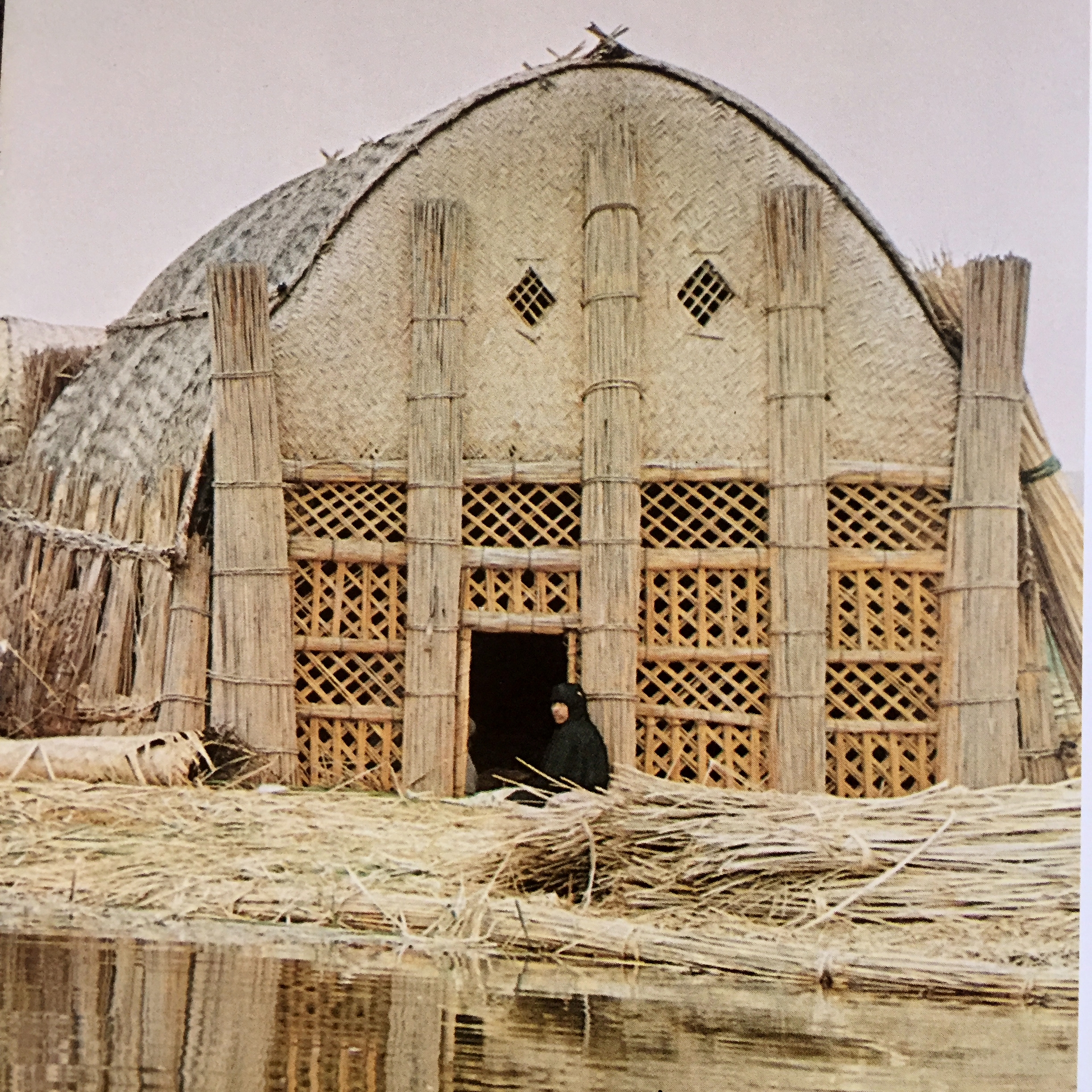
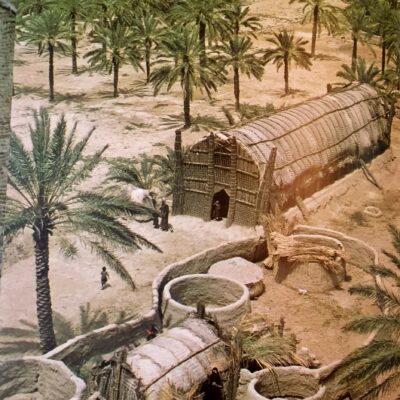
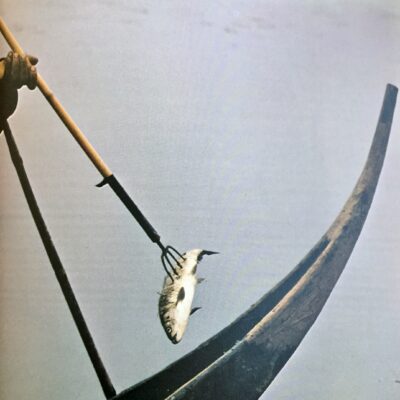

The rug designs are influenced by the surrounding environment of the region and its history.
Images top row from left: cylinder seal from the Uruk period (*) with a rosette motive, string of beads with rosette (**), cylinder seal showing the star disc and crescent, old Babylonian period, cylinder seal and drawing showing of the seal impression, probably late Uruk period. (***).
Images bottom row: Gavin Young, photography by Nik Wheeler ‘Return to the Marshes’, 1977.
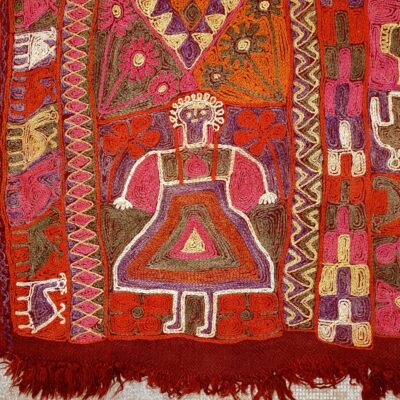
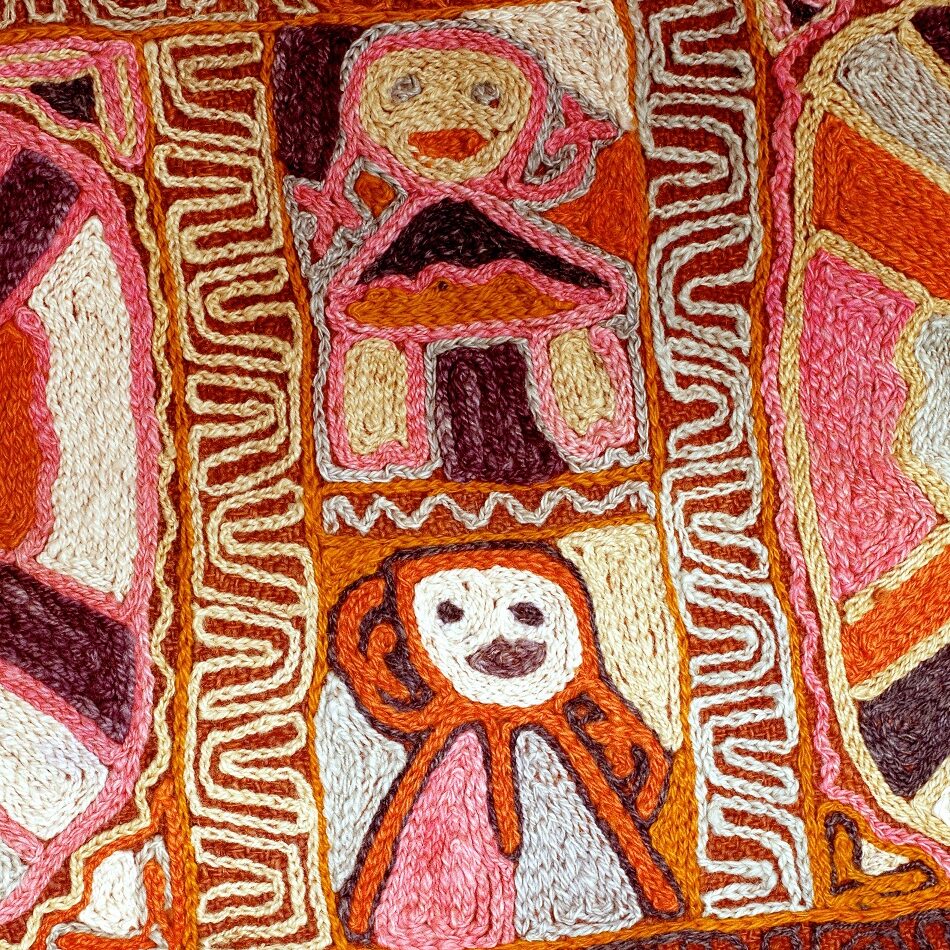

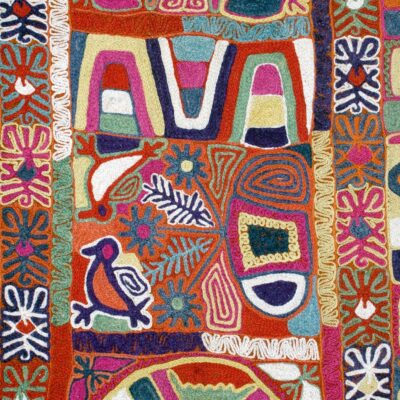


The Wedding Blanket
Every girl embroidered a blanket for her wedding and continued to embroider for special occasions, such as when a male relative left the village to work in the cities. The blankets were used daily and not preserved as heirlooms. This may explain why antique ones are rare.
Every girl embroidered a blanket for her wedding and later went on embroidering for special occasions.
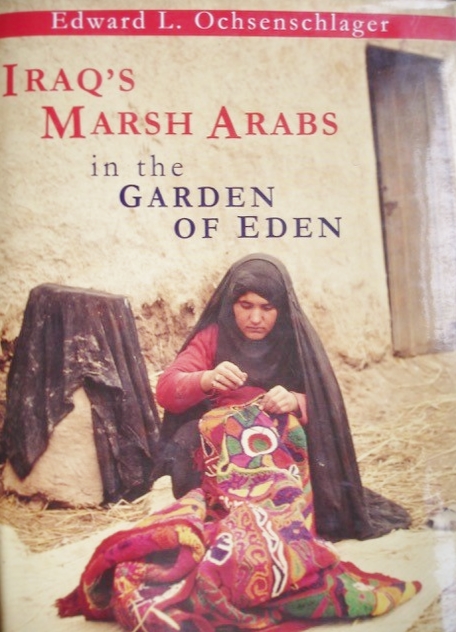
Orchsenschlager, Edward L., 'Iraq's Marsh Arabs in the Garden of Eden', 2004.
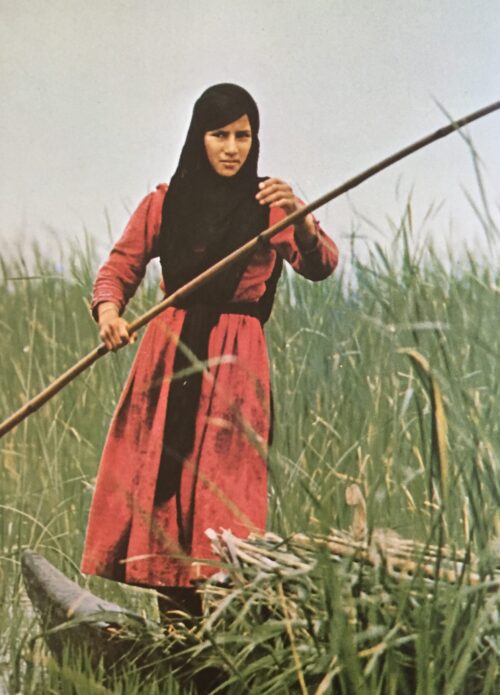
Young, Gavin, and Phtography Wheeler, Nik, 'Return to the Marshes', 1977.
Technical Knowledge
When a girl or a woman planned to embroider a rug, she went to the local weaver or to the local market to buy or trade for the woolen cloth she needed. The cloth was a twill, woven by professional weavers on four-harness looms.
” The women of the Ma’dan (Marsh Arabs), they do not bother with weaving, but leave this activity to a male specialist, who is almost always of Kurdish descent. They trade the wool themselves, with the surrounding Arab tribes or in the markets of the cities.” Dr. Sigrid Westphal-Hellbusch, Die Ma’dan: Kultur und Geschichte der Marschenbewohner im SüdIraq. Berlin 1962.
The rugs average size is 160 x 220 cm, some being shorter or longer than others, the width does not vary considerably. Each one is composed of two lengths of hand-woven cloth which were sewn together after the embroidery was done.
The women spun and dyed the stitching yarn themselves. They got the wool from their own sheep or from their neighbors. Only the oldest of the preserved blankets are embroidered with plant dyed wool. Industrial dyes were available on the local markets before 1960 and are much easier to use than plant dyes. It is wonderful to see how the women handled these very strong colors and put them in relation to each other. Al-Samawah rugs are unlike any other textile tradition of the Middle East.
The embroidery was done with a small hook similar to a crochet hook, but with a pointed tip to pierce the fabric more easily. A stitching frame was used to hold the cloth. The girl held a thread or a small ball of embroidery yarn under the cloth, and used the hook to pull up a loop of yarn to the surface, then repeated the process. This technique is common in Rajasthan and may have been brought to Iraq by the migrating Roma.
.
Al-Samawah rugs are unlike any other textile tradition of the Middle East.
Gardens of Eden of Mesopotamia Collection
The collection consisted of more than 100 pieces of Al-Samawah rugs, that Maya Ilg had collected over the years. She traded many of them with interested individuals, creating several smaller collections.
Two main features that dominate most of the pieces are: (1) The red-orange hues of the yarns and (2) the medallion patterns in various shapes, such as circles and diamonds.
The rugs usually have four or sometimes five medallions arranged vertically on half of the rug (each rug is made of two pieces). Even the rugs without medallions have four vertical sections.
The medallions are filled and surrounded by diverse design motifs, such as geometric shapes, flowers, palm trees, people, animals (camels, buffalo, birds, scorpions, fish, etc.), and structures that resemble tents, guesthouses, domes, and minarets.
Christian people embroidered smaller pieces in the same technique but with Christian symbols. They were destined to cover the coffin of a deceased person.
The pieces can have different motifs together, or one motif can prevail over the others. They are arranged in playful combinations and vibrant colours, creating striking designs. Some rugs stand out with a rare design element among the mix.

Medallions
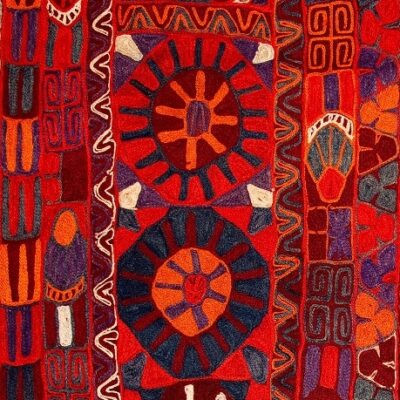

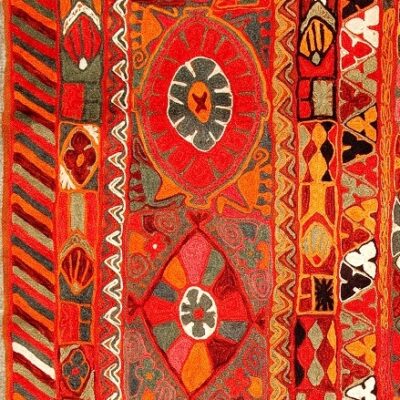
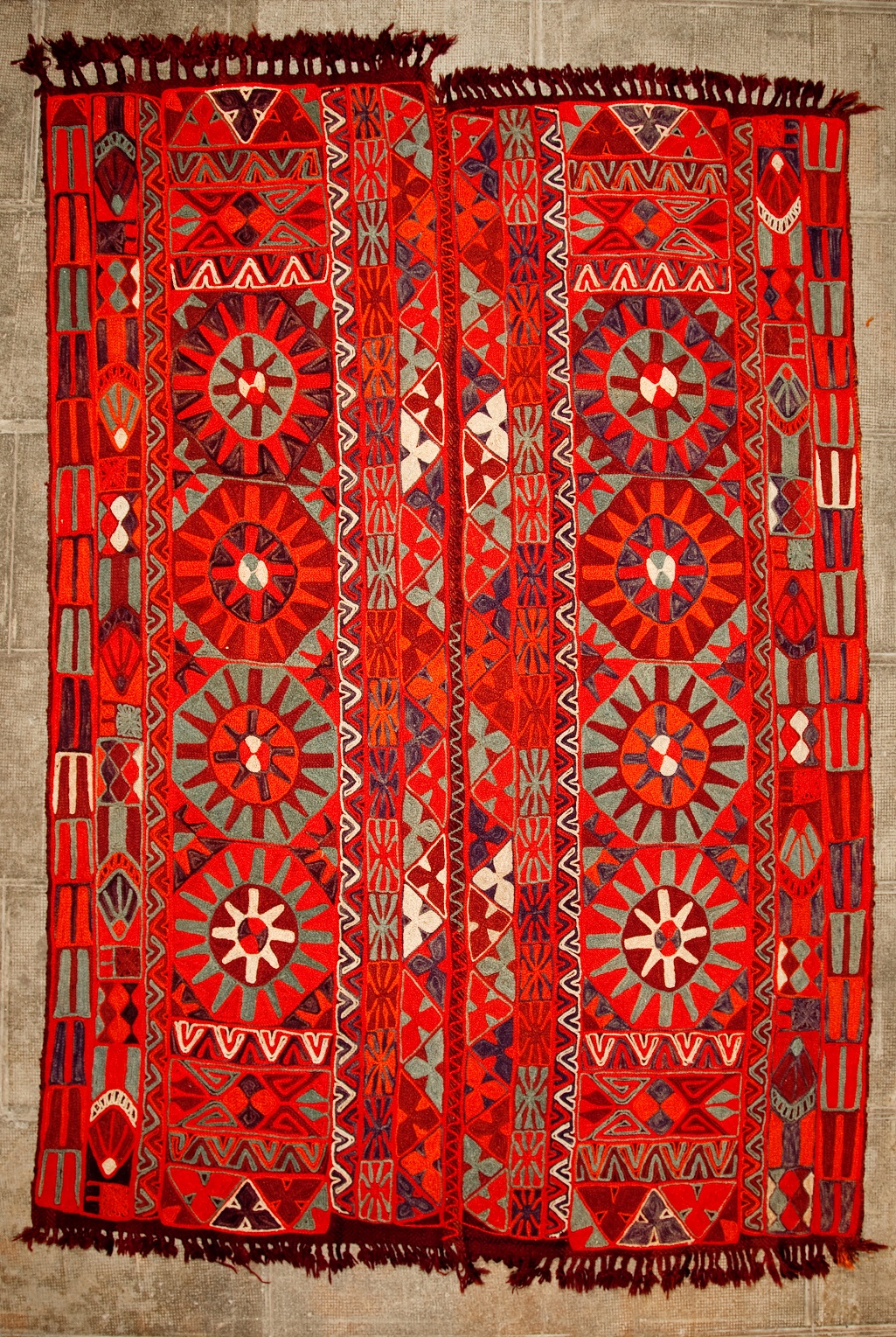
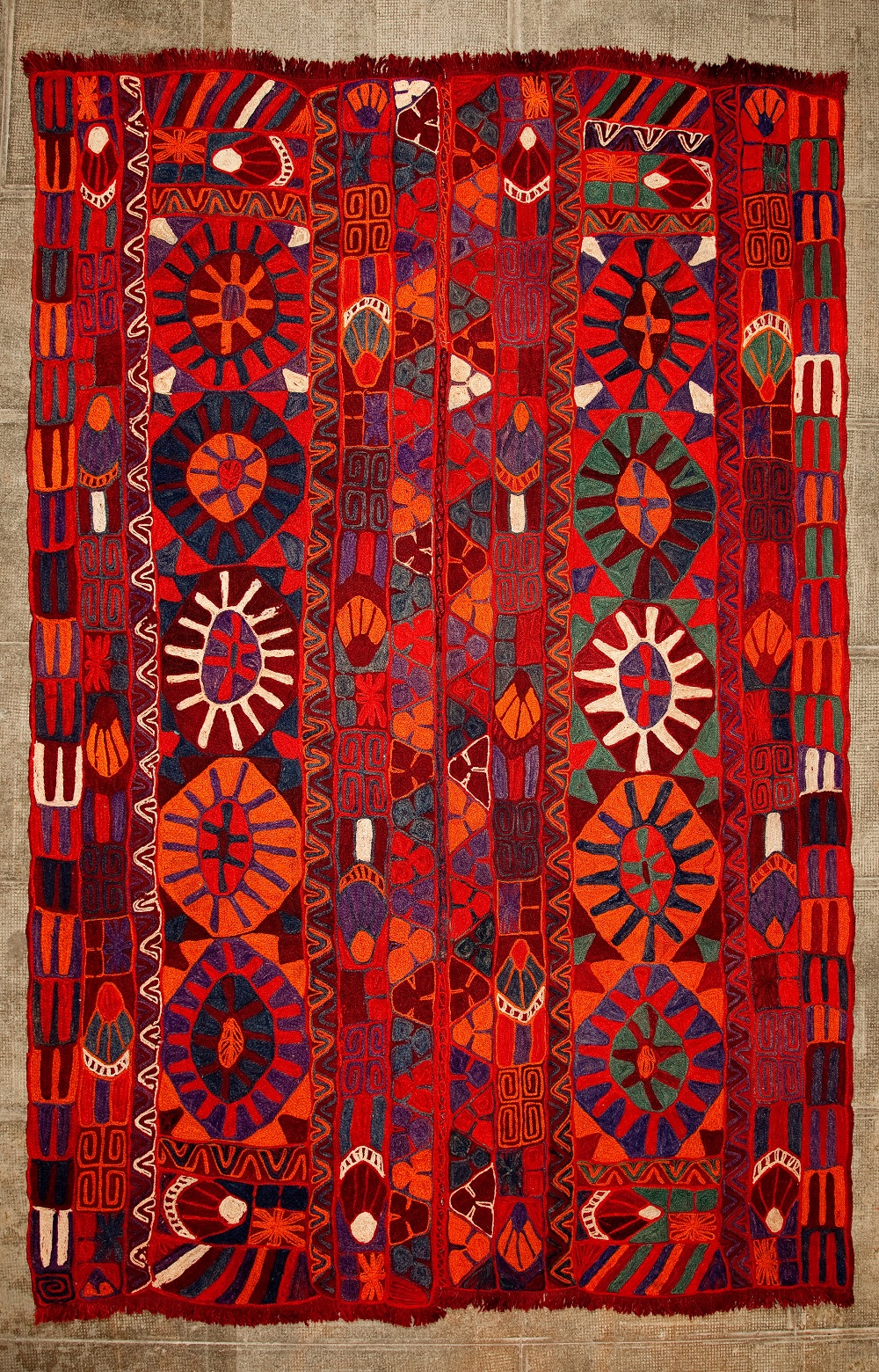

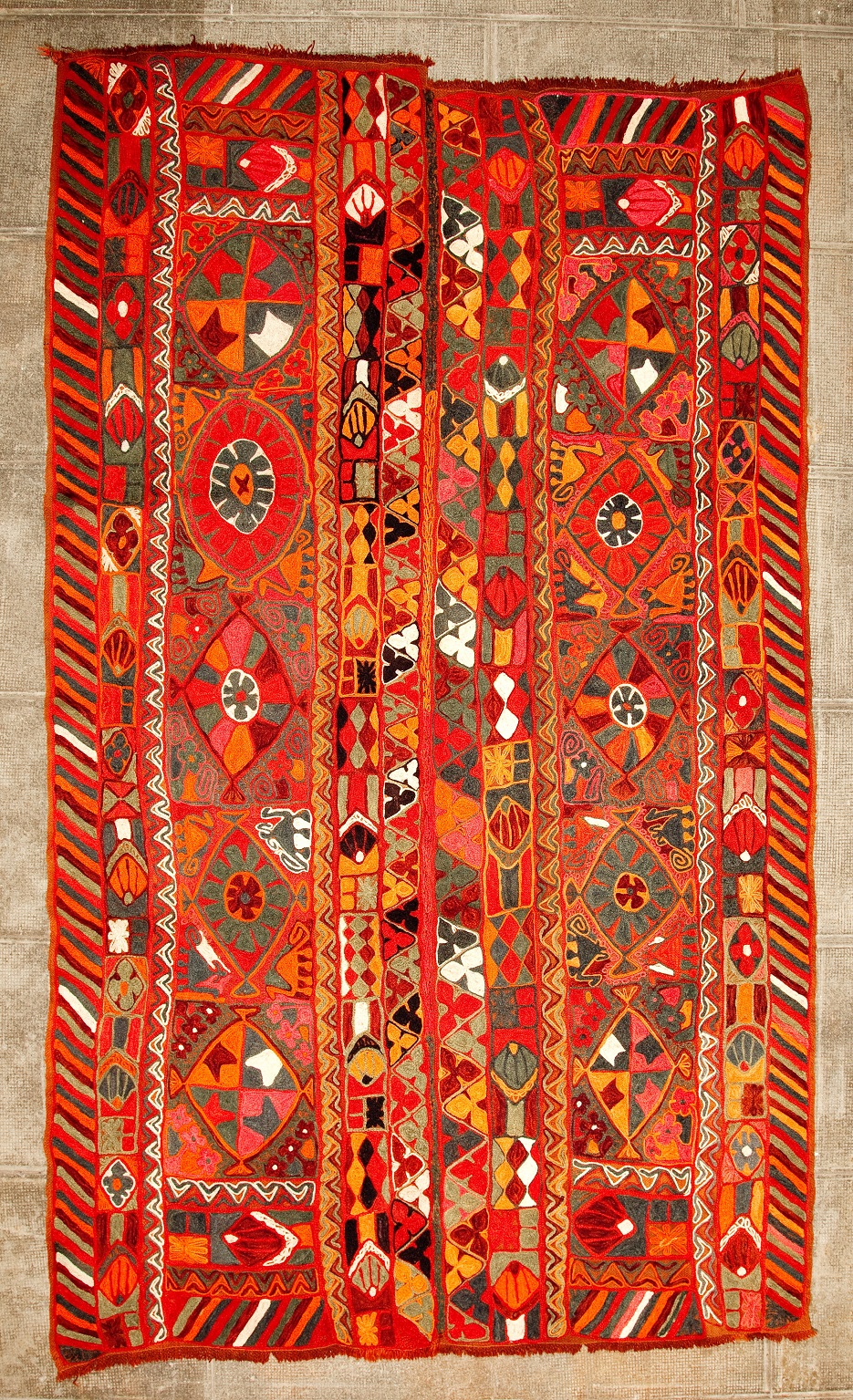

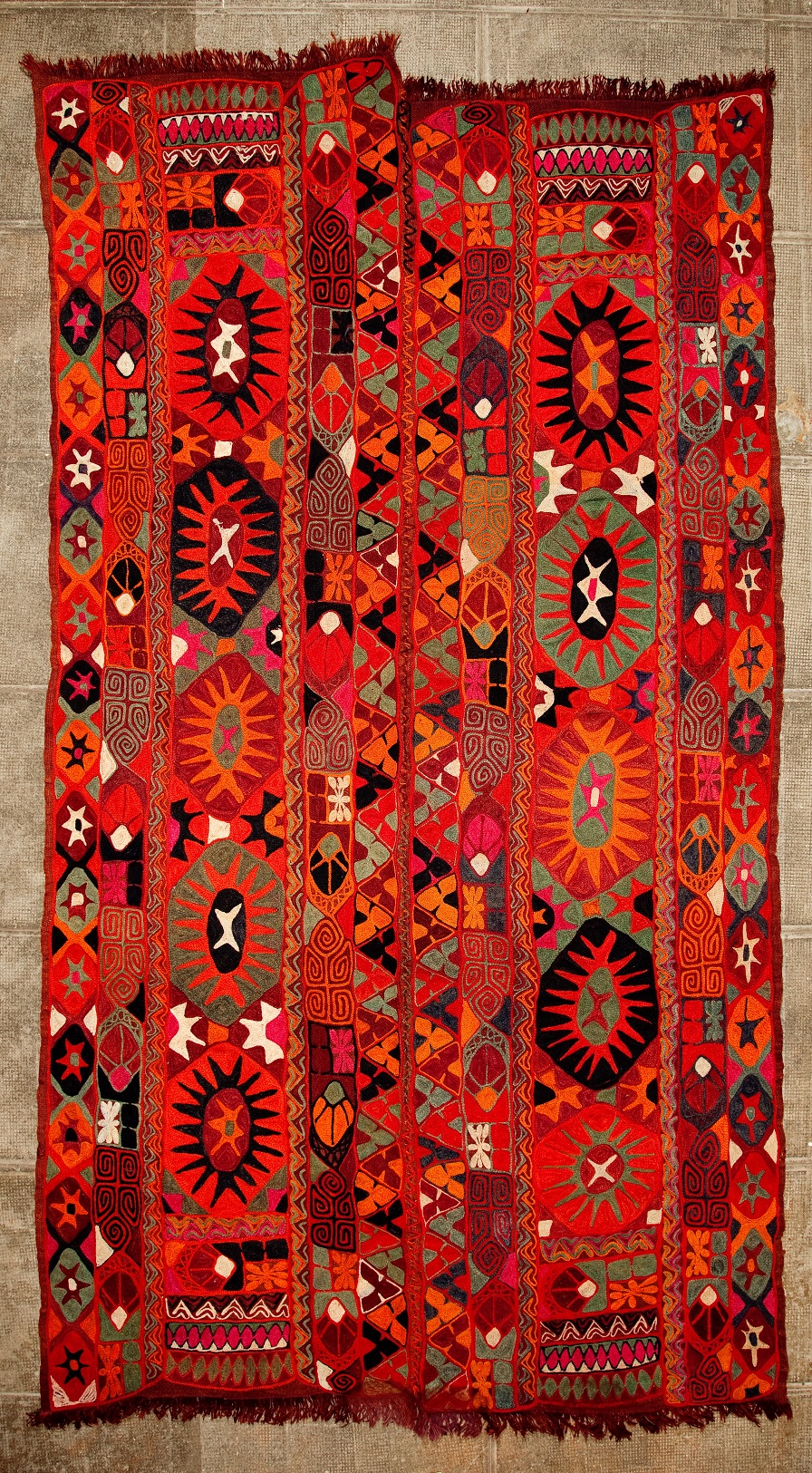

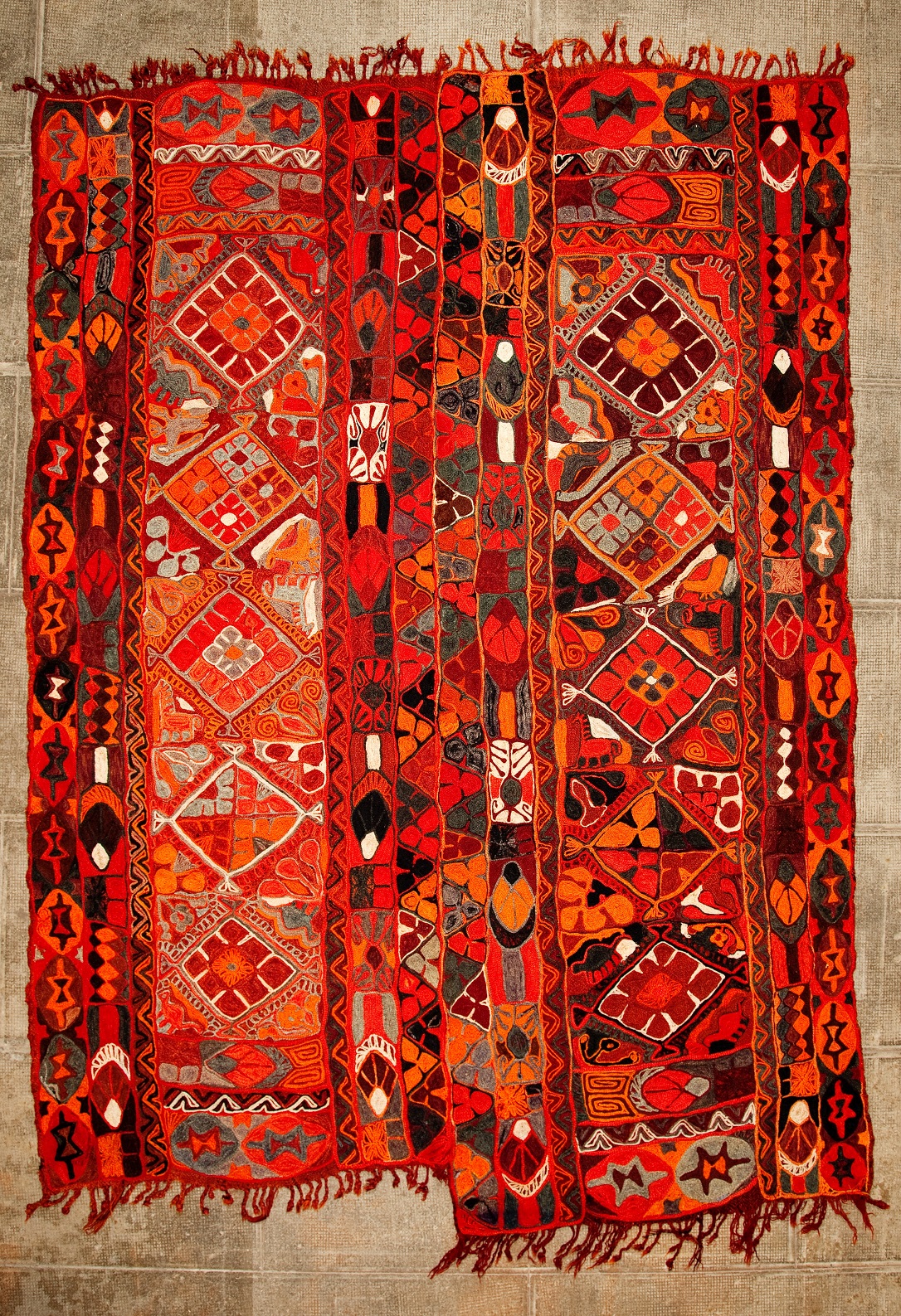
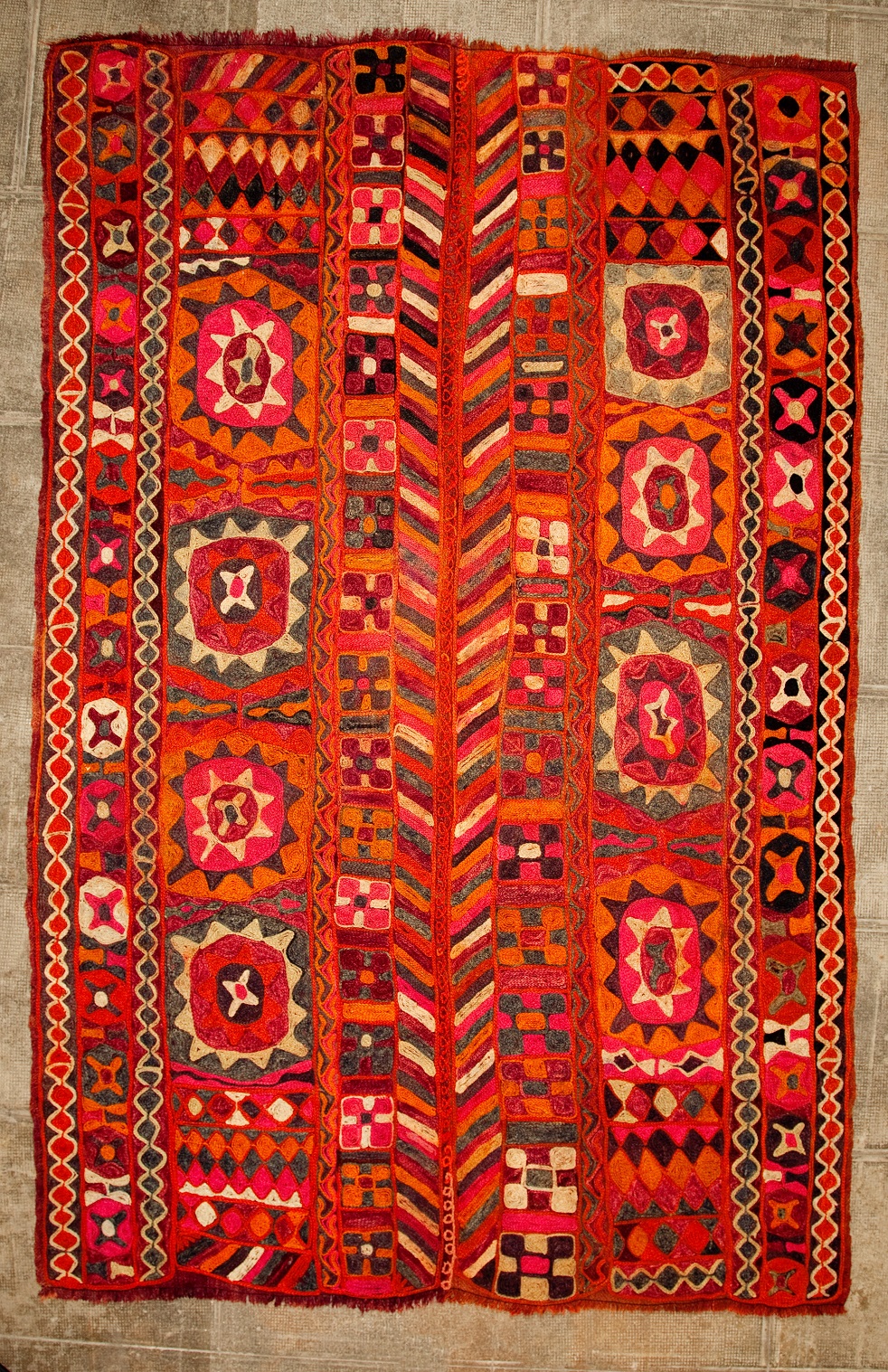
Geometric Patterns
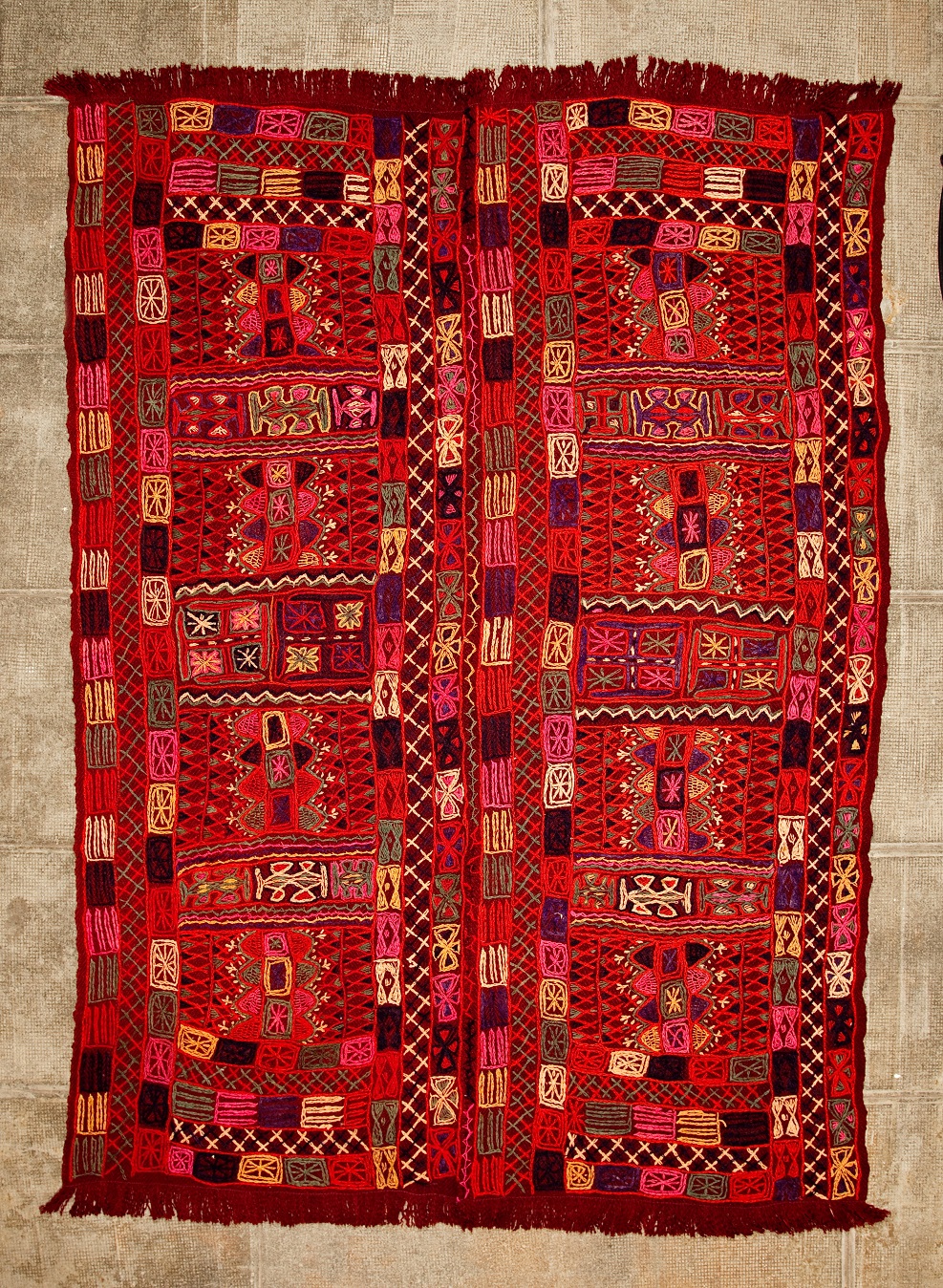
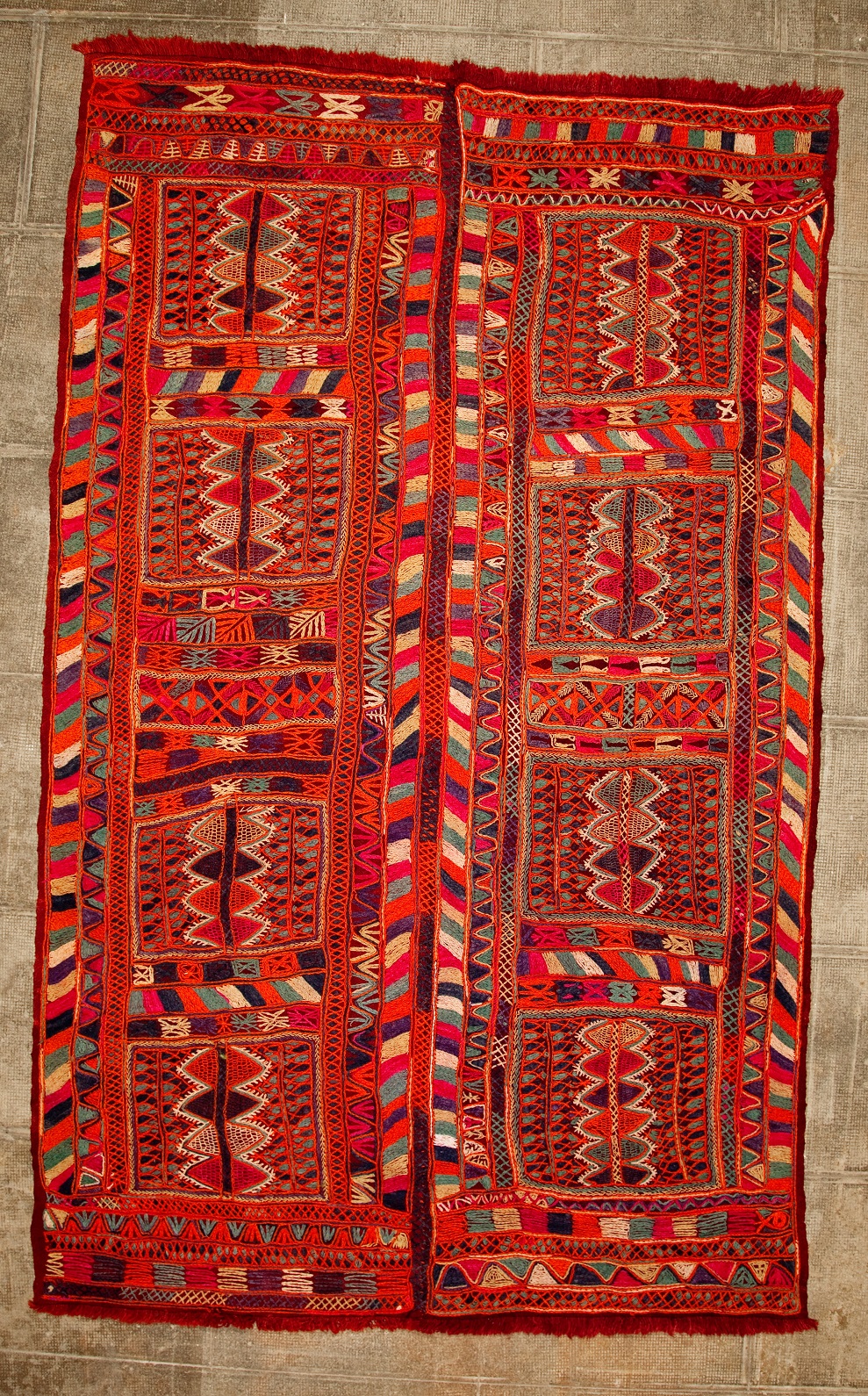
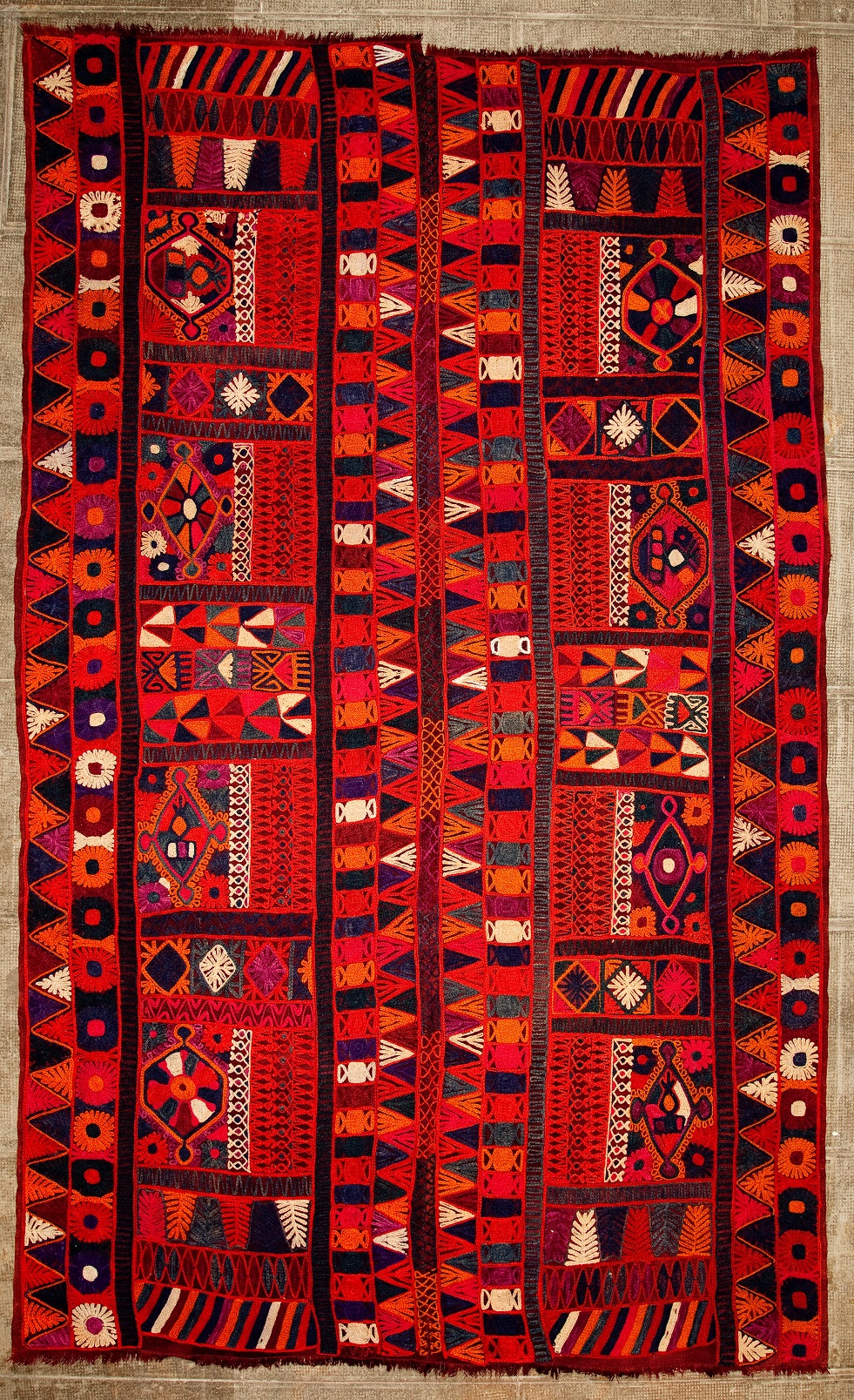
Flowers
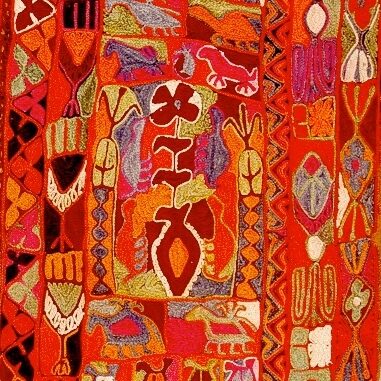
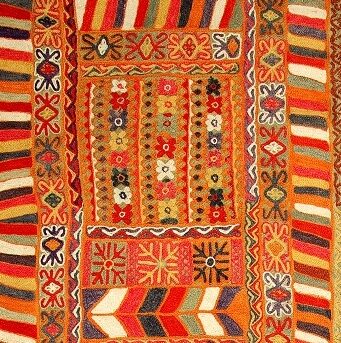
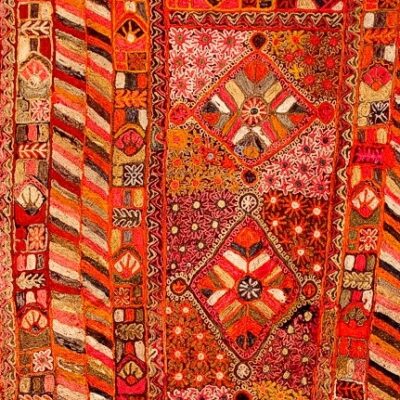

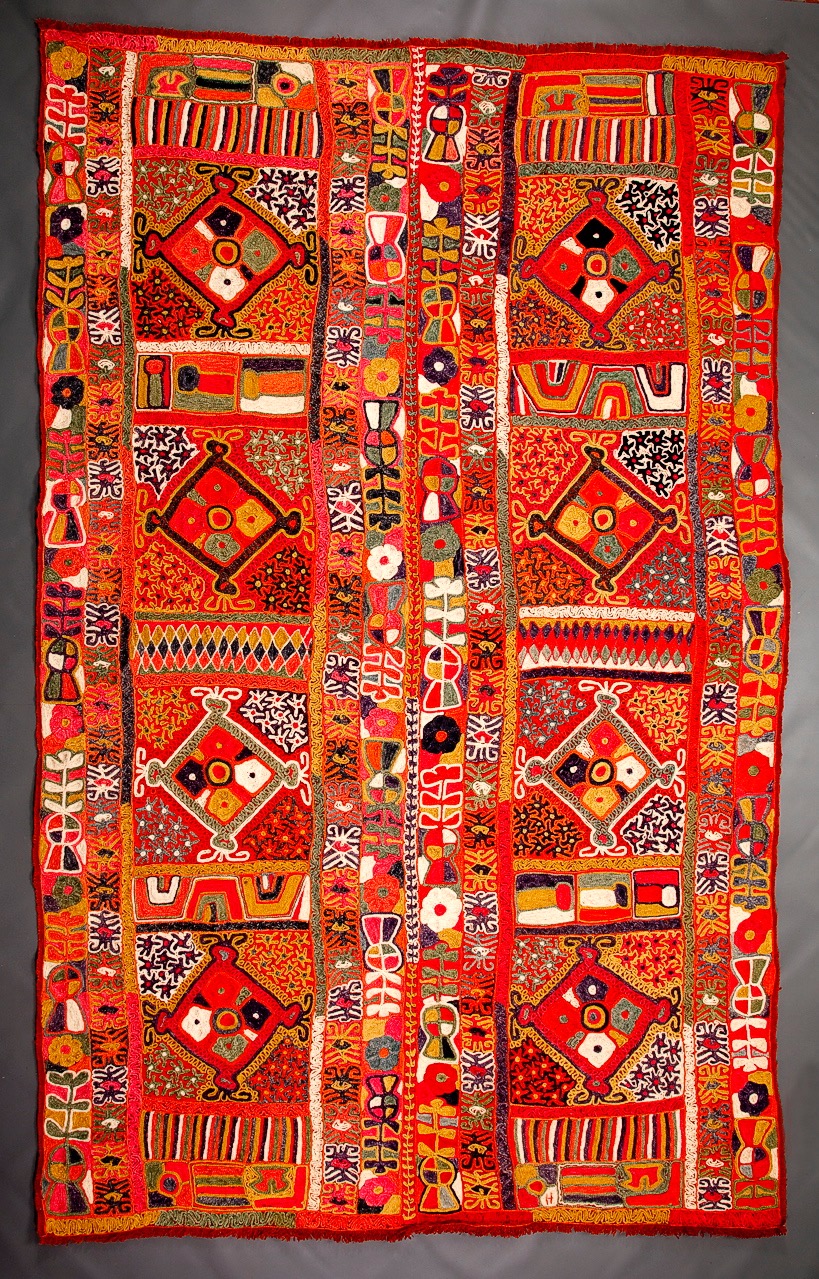
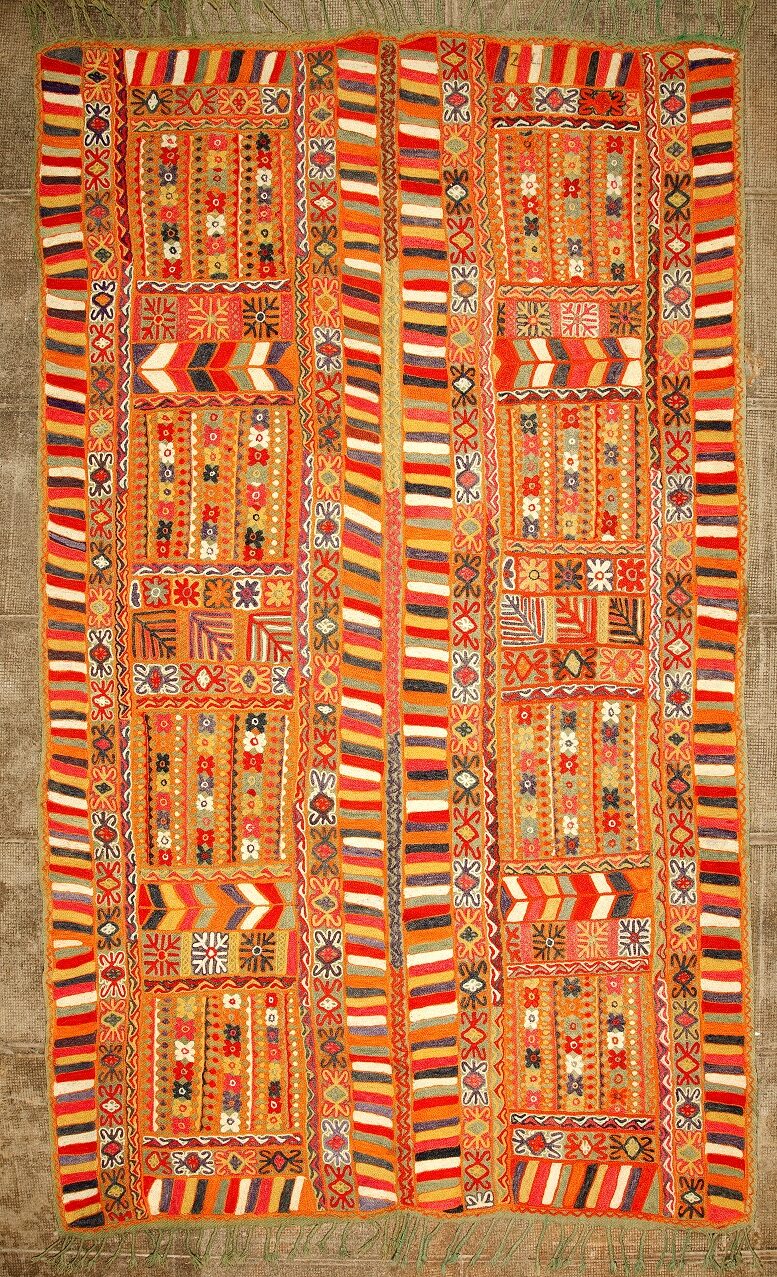
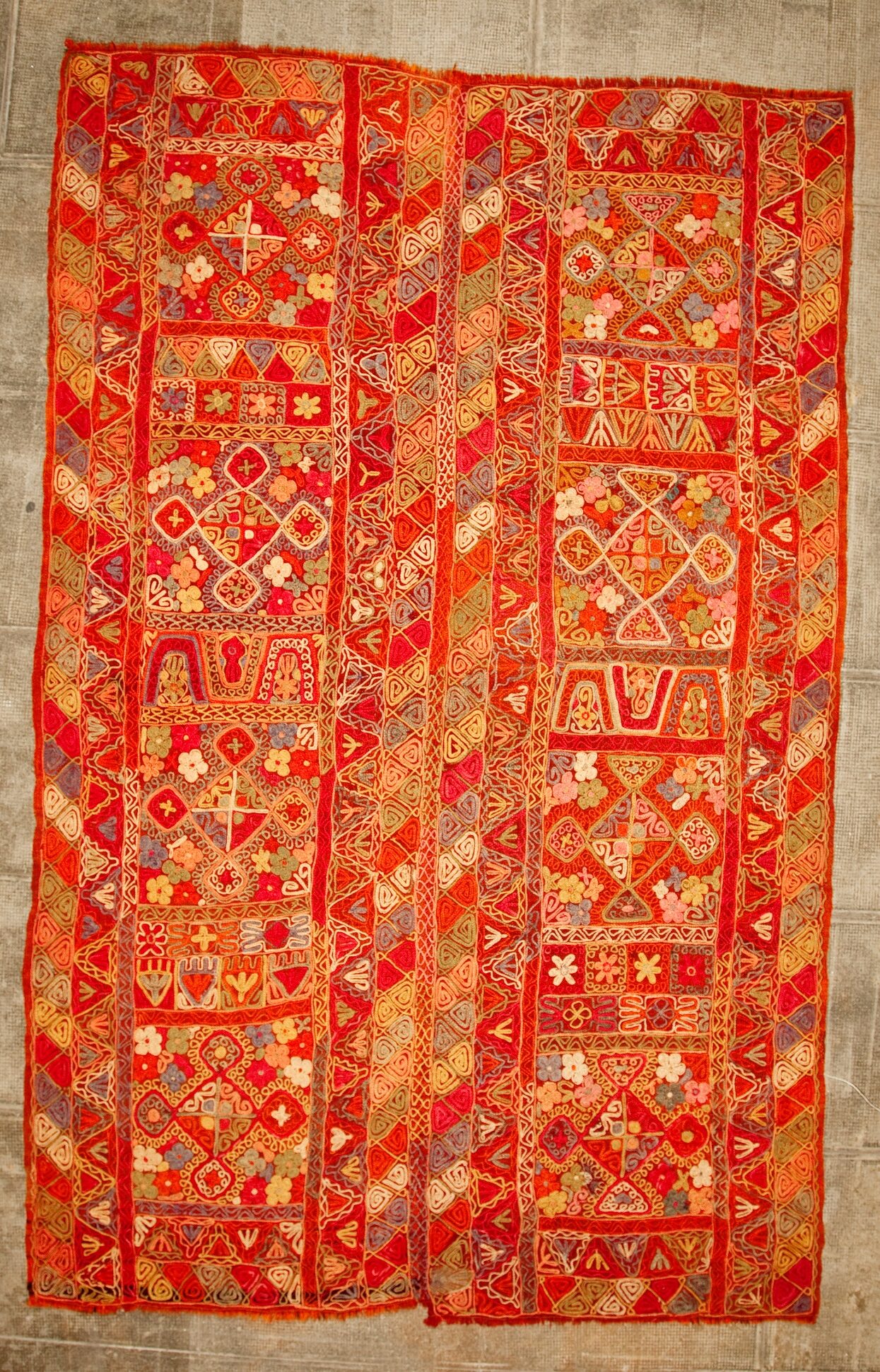
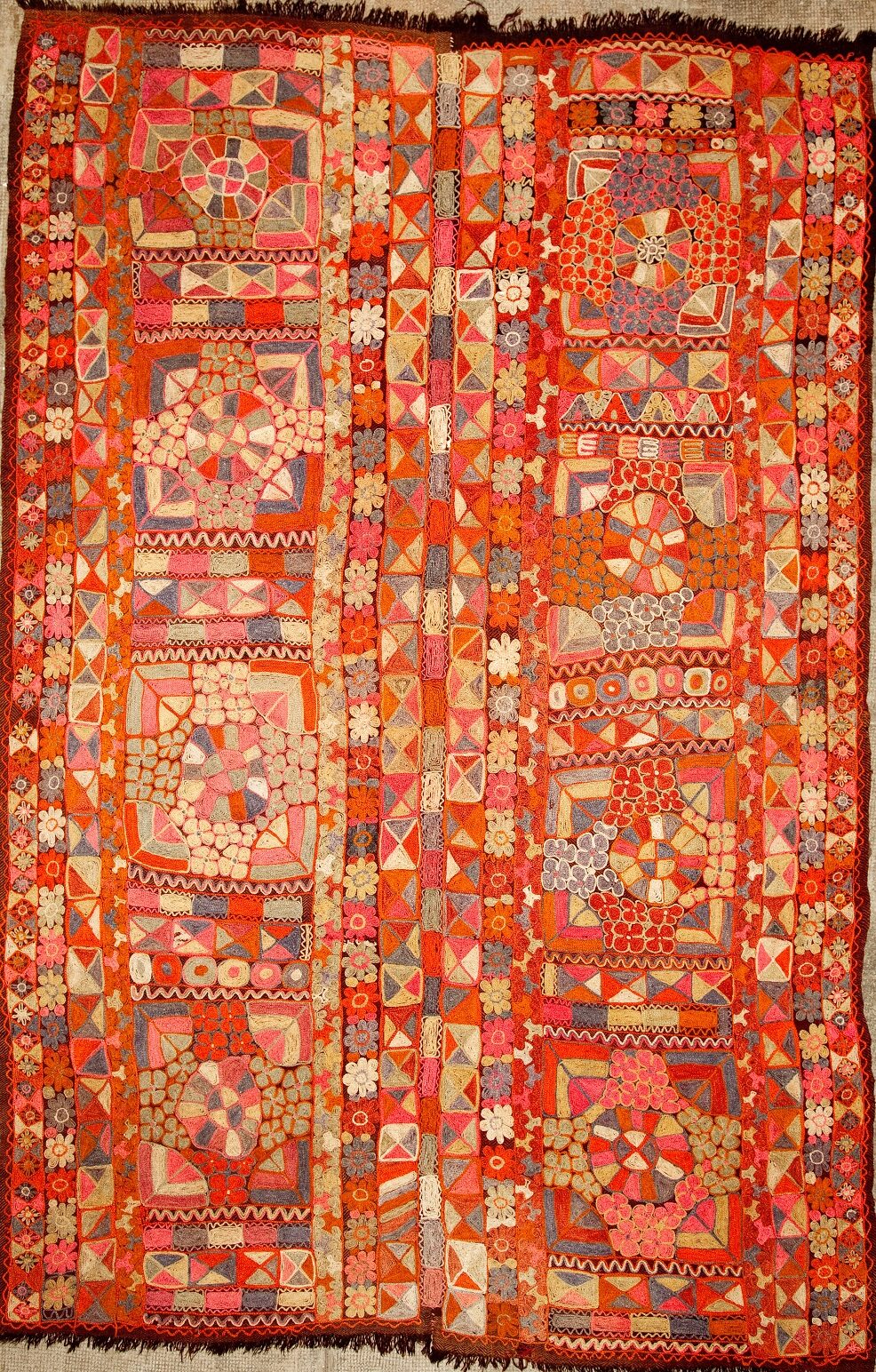
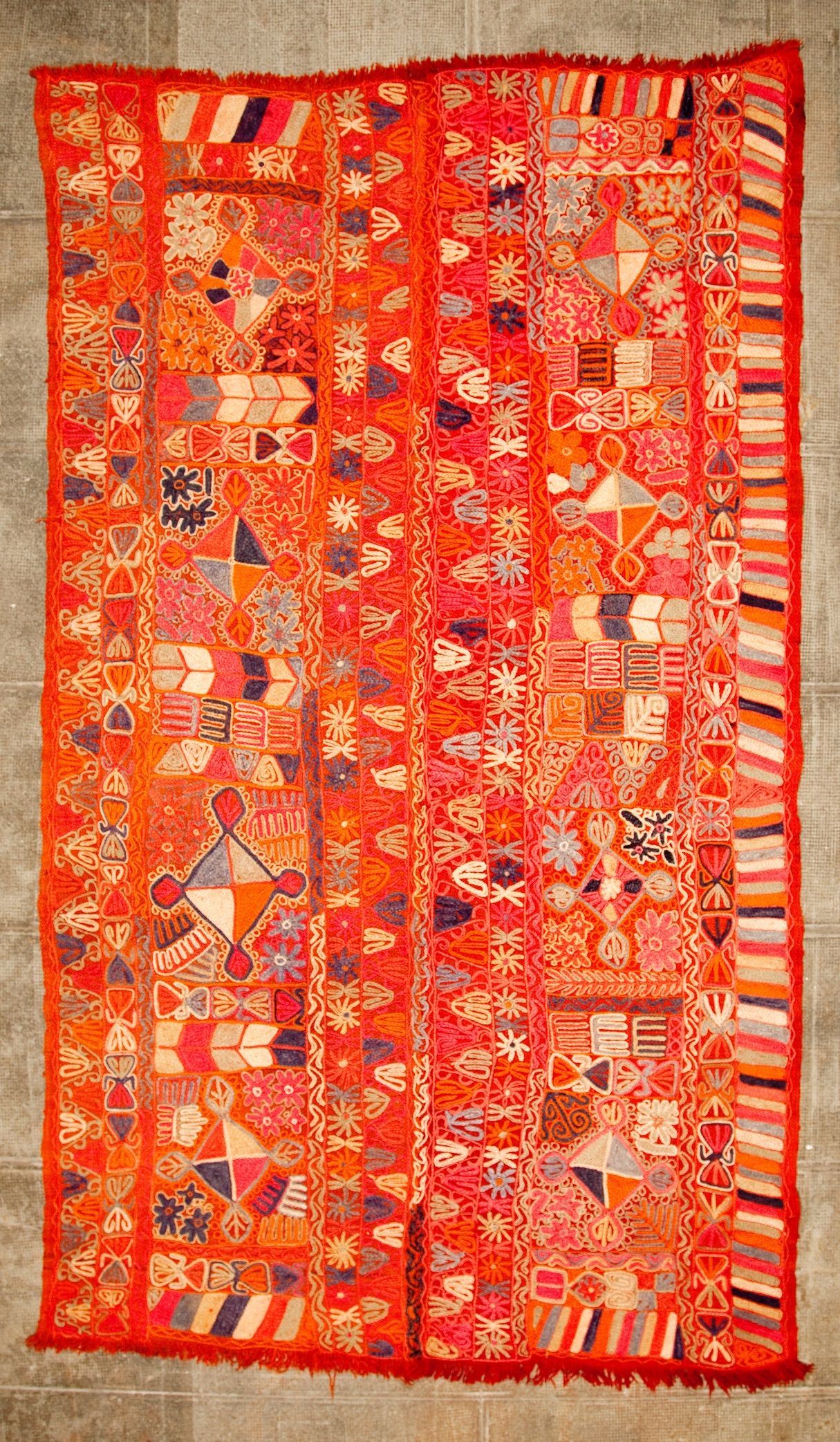
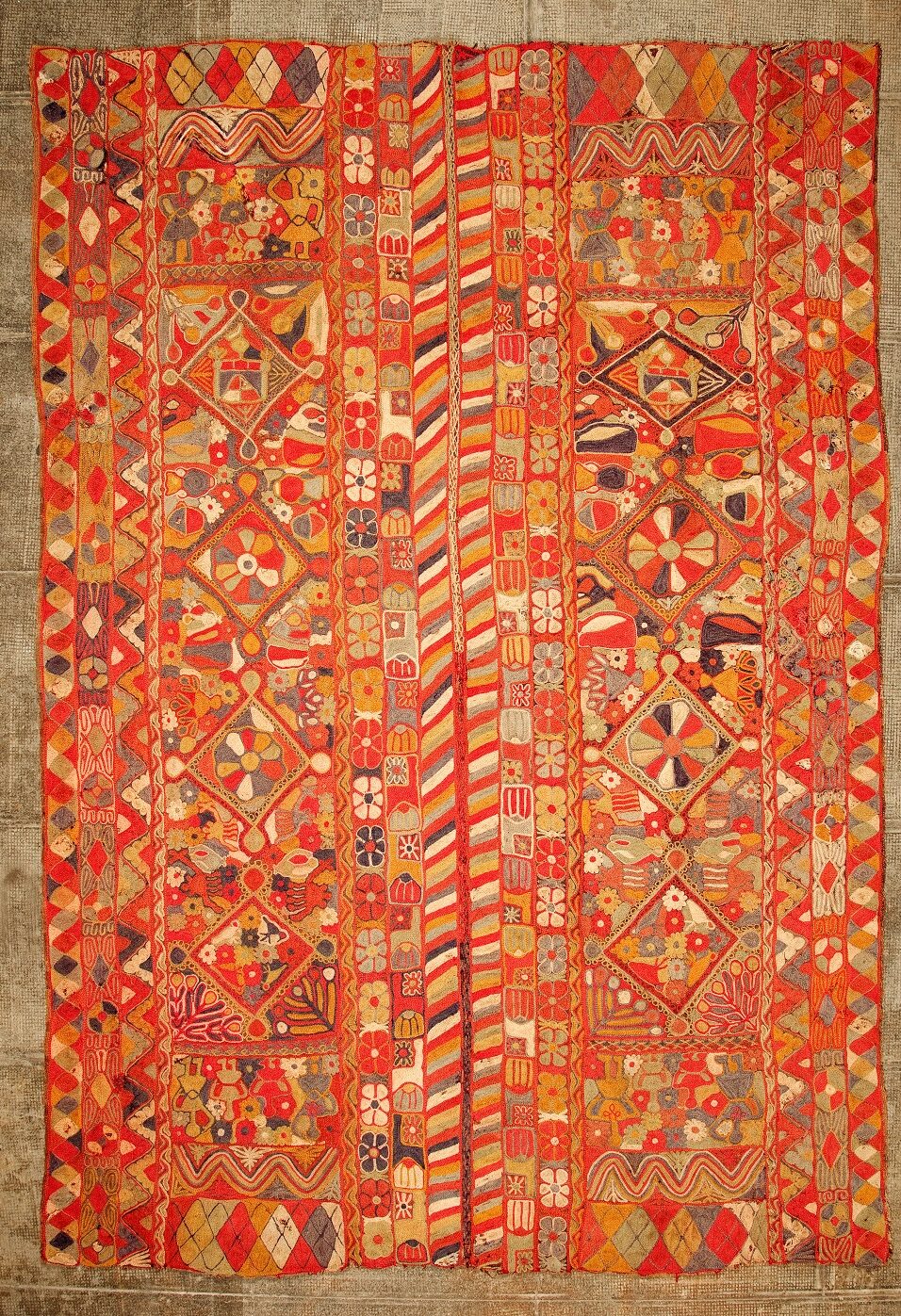

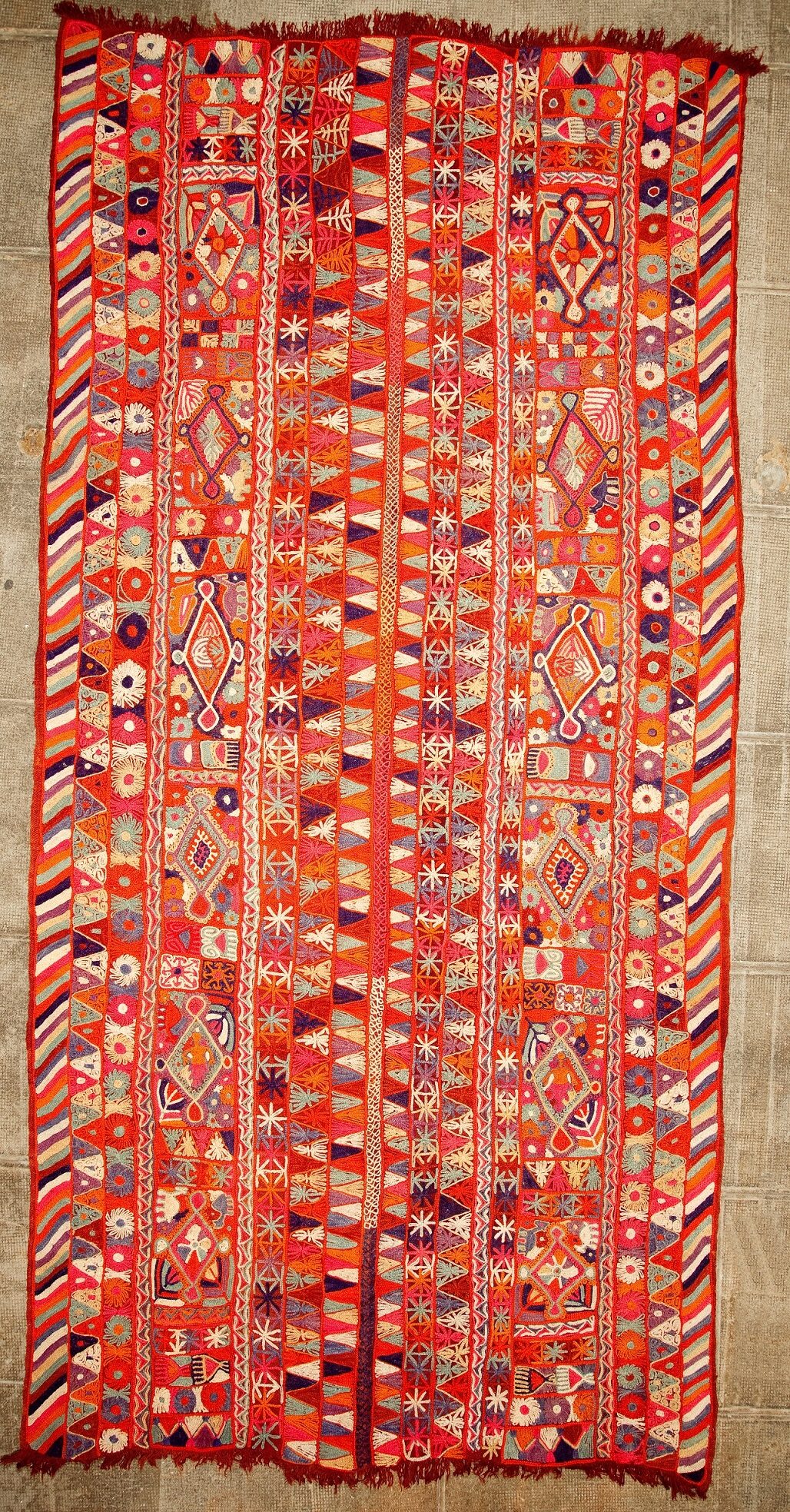
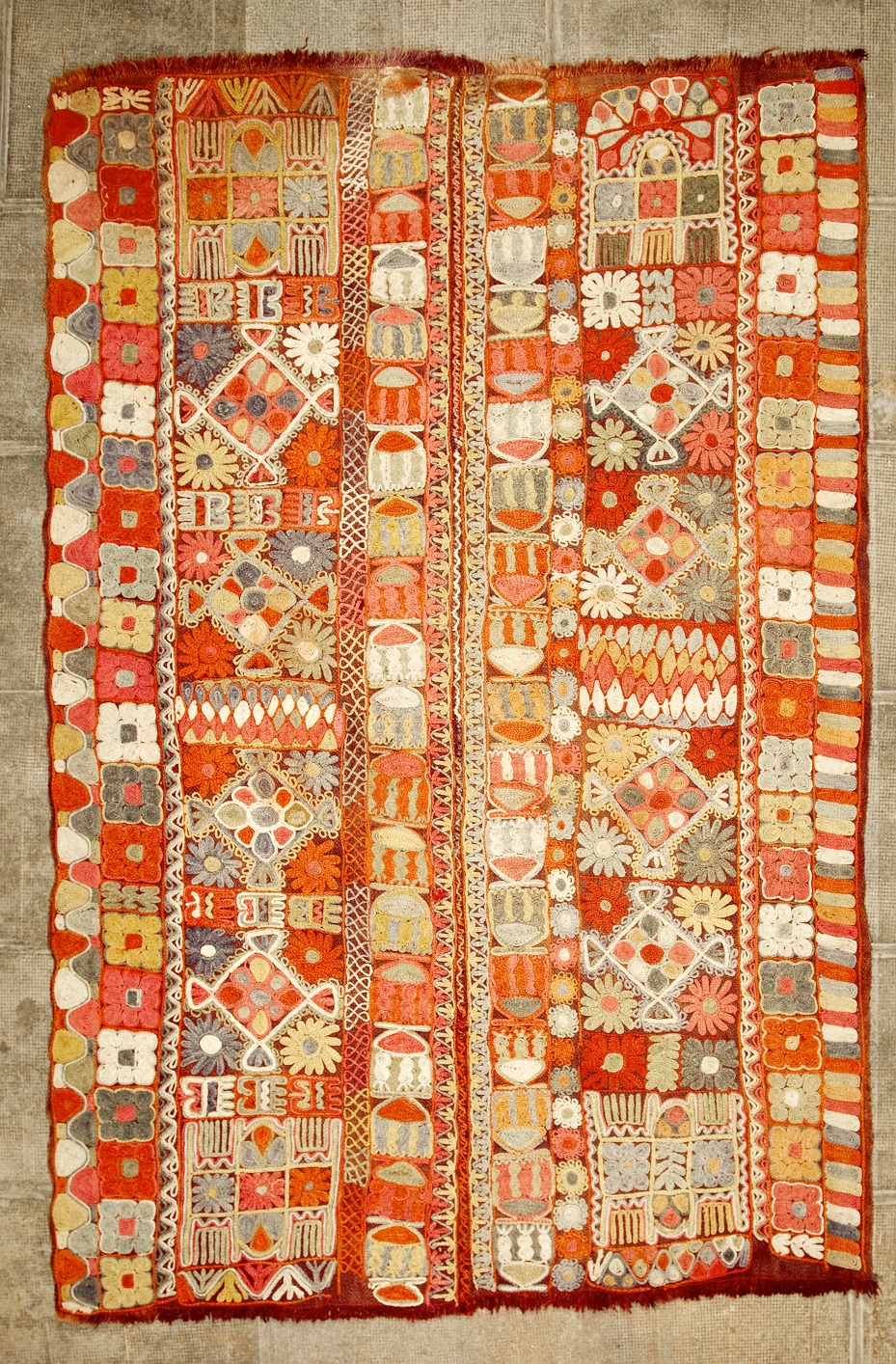
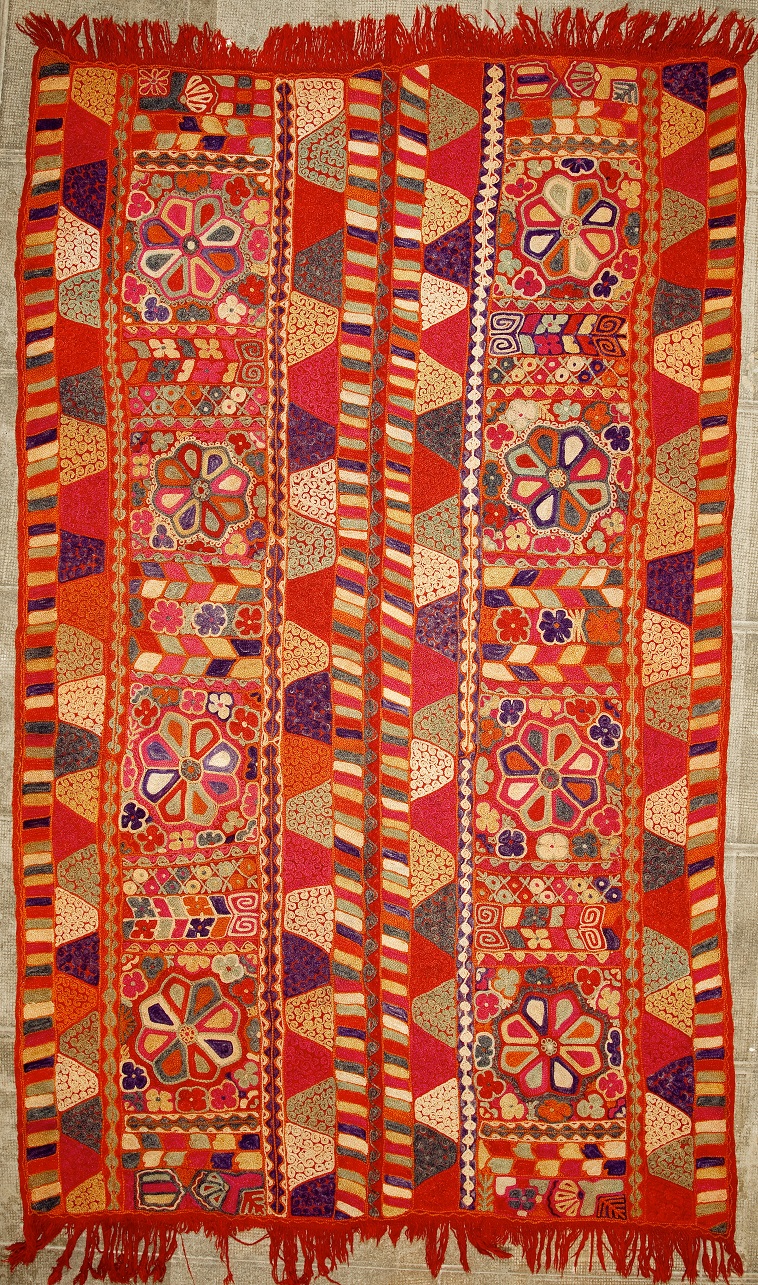
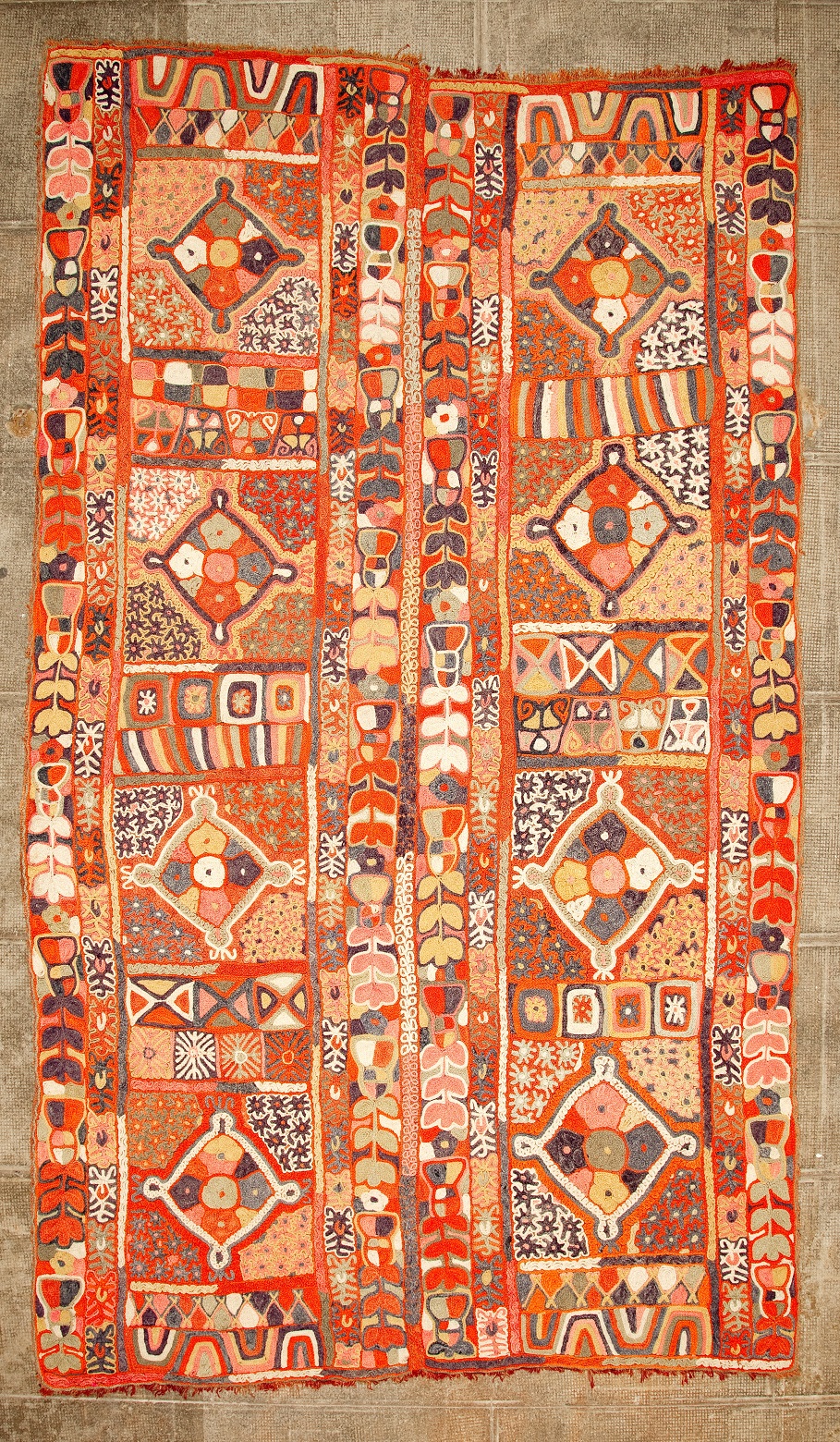
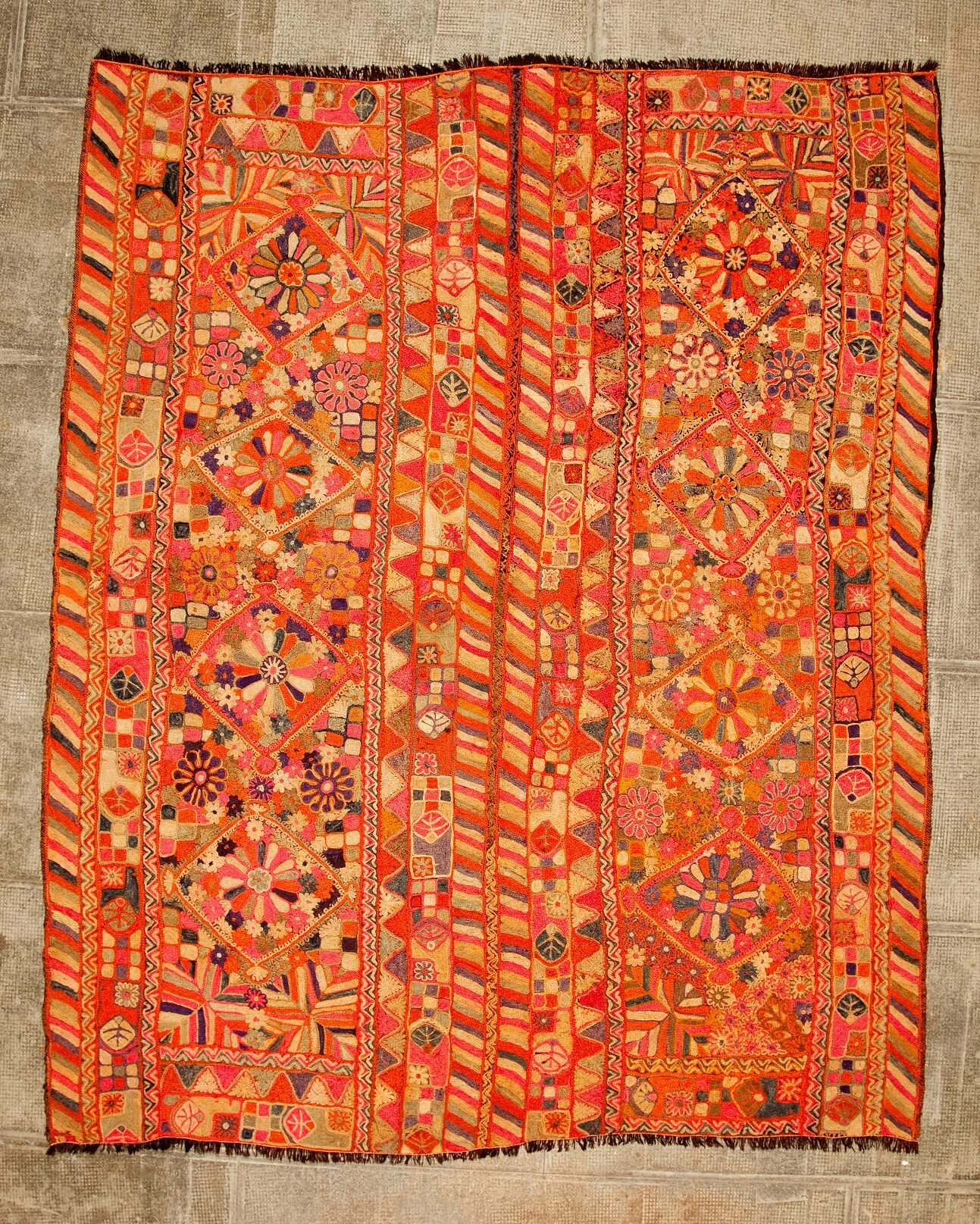

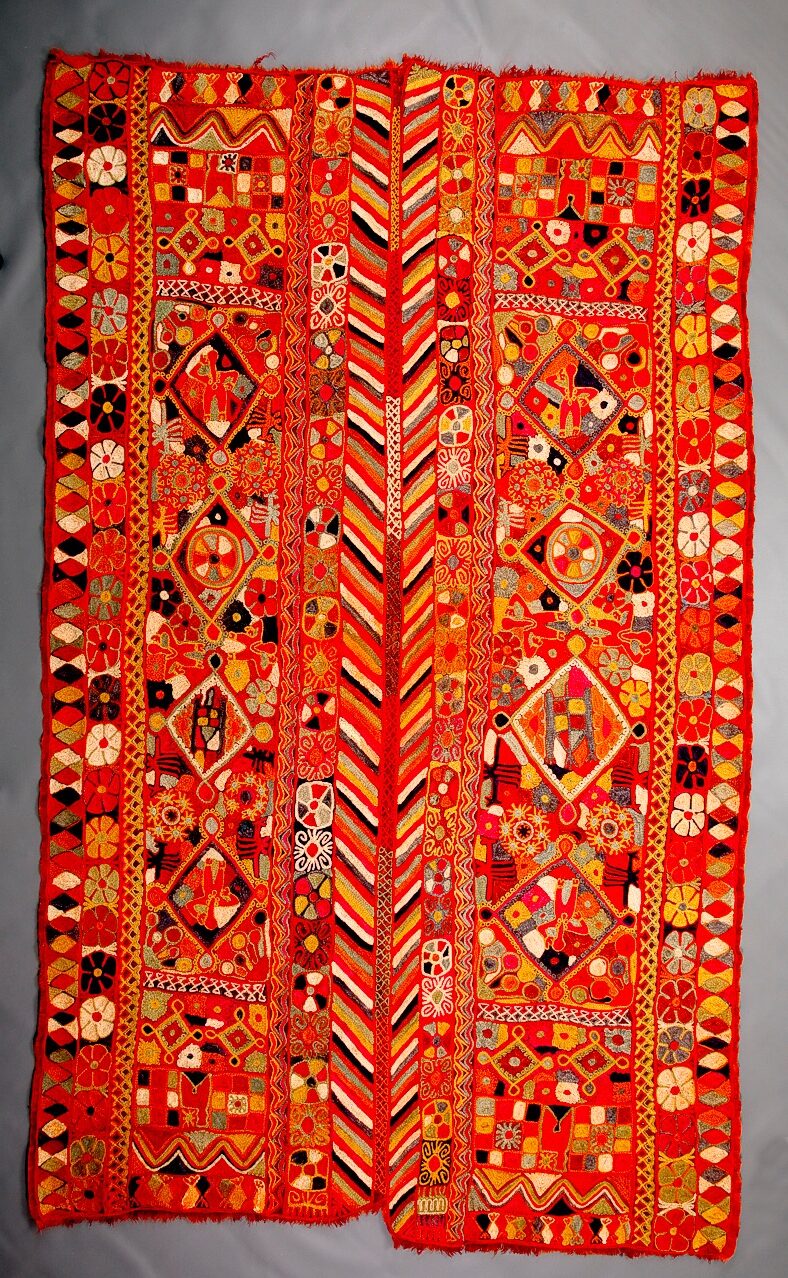
People
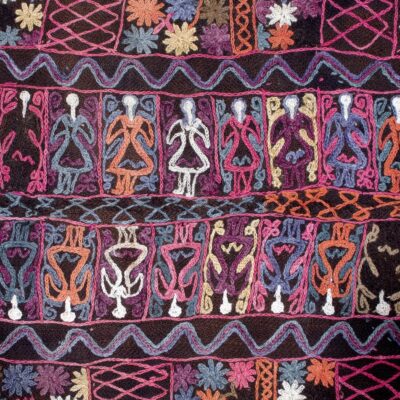
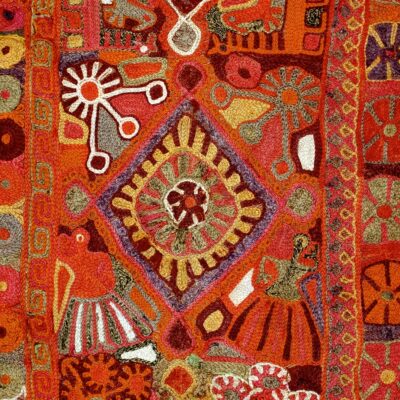
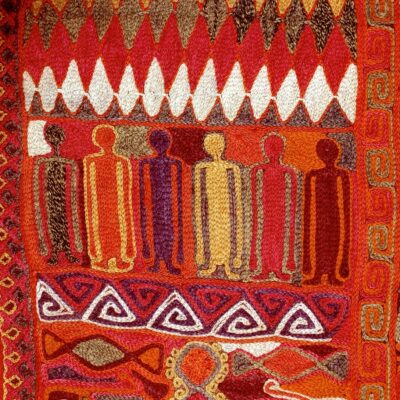
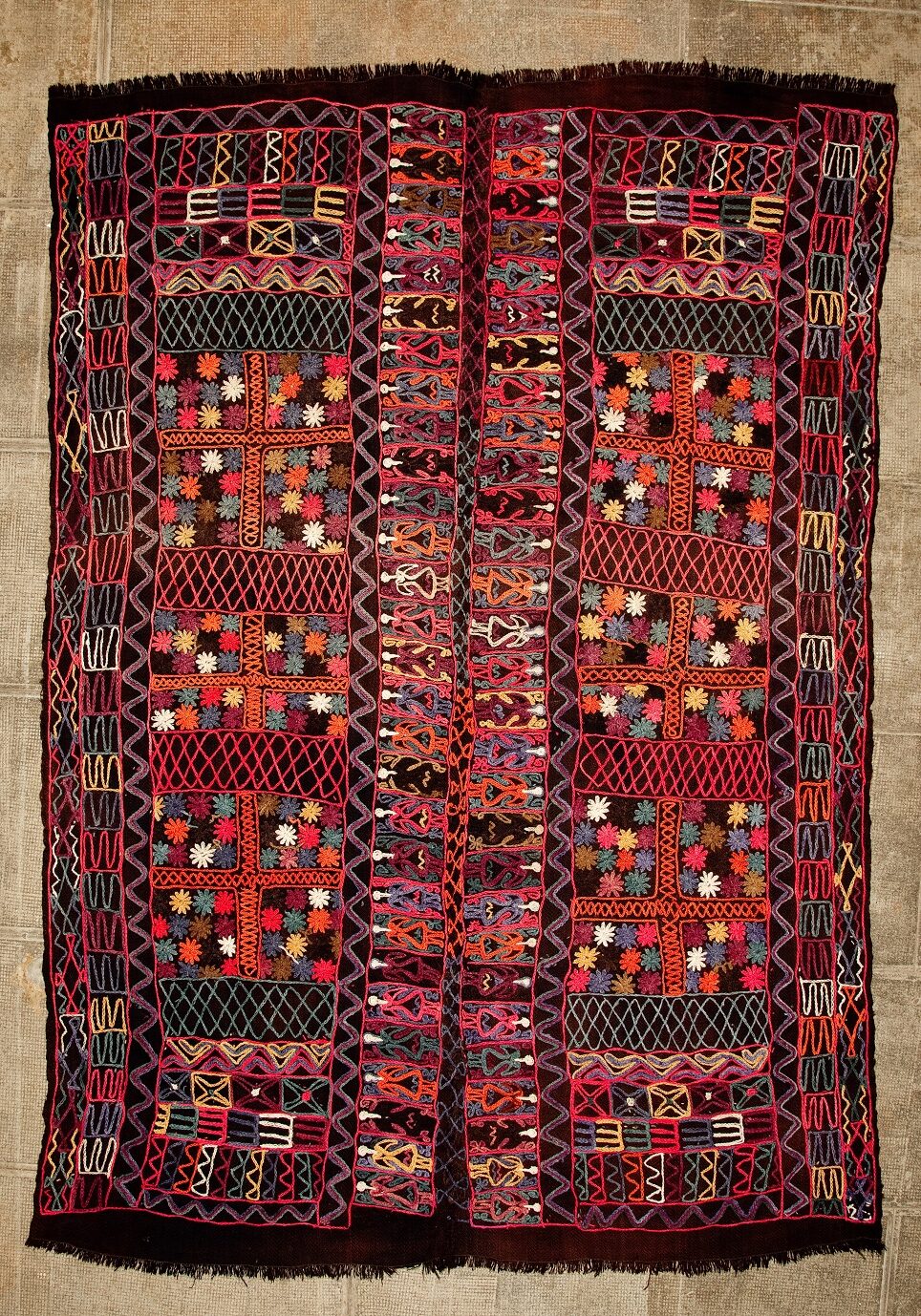
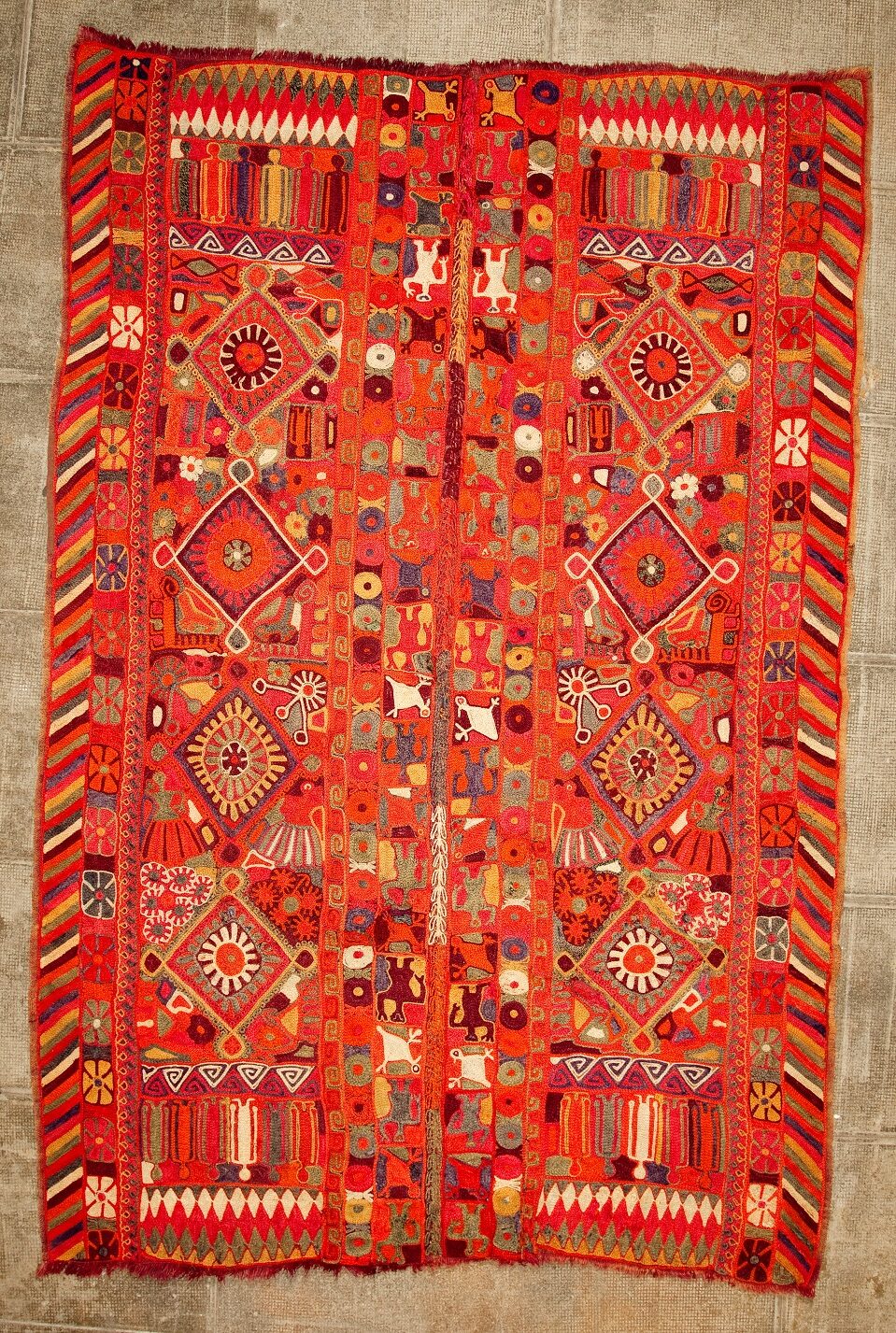

Animals
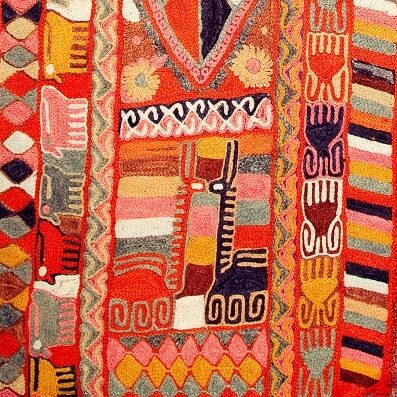
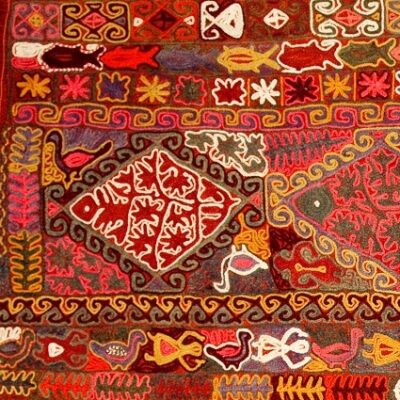
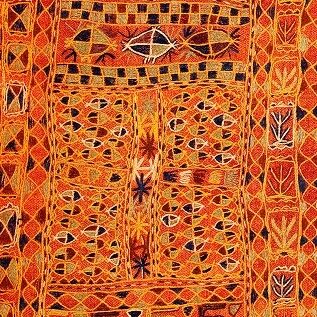

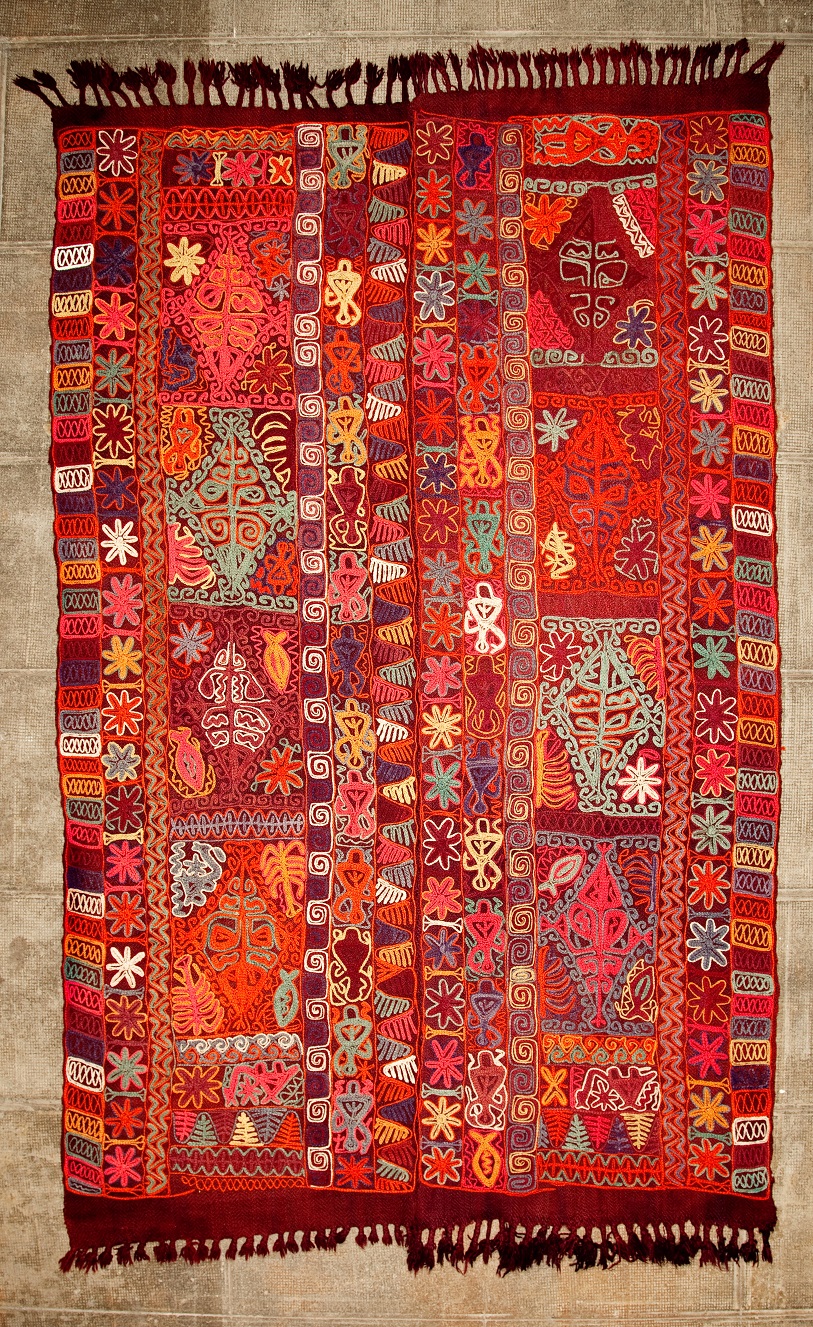

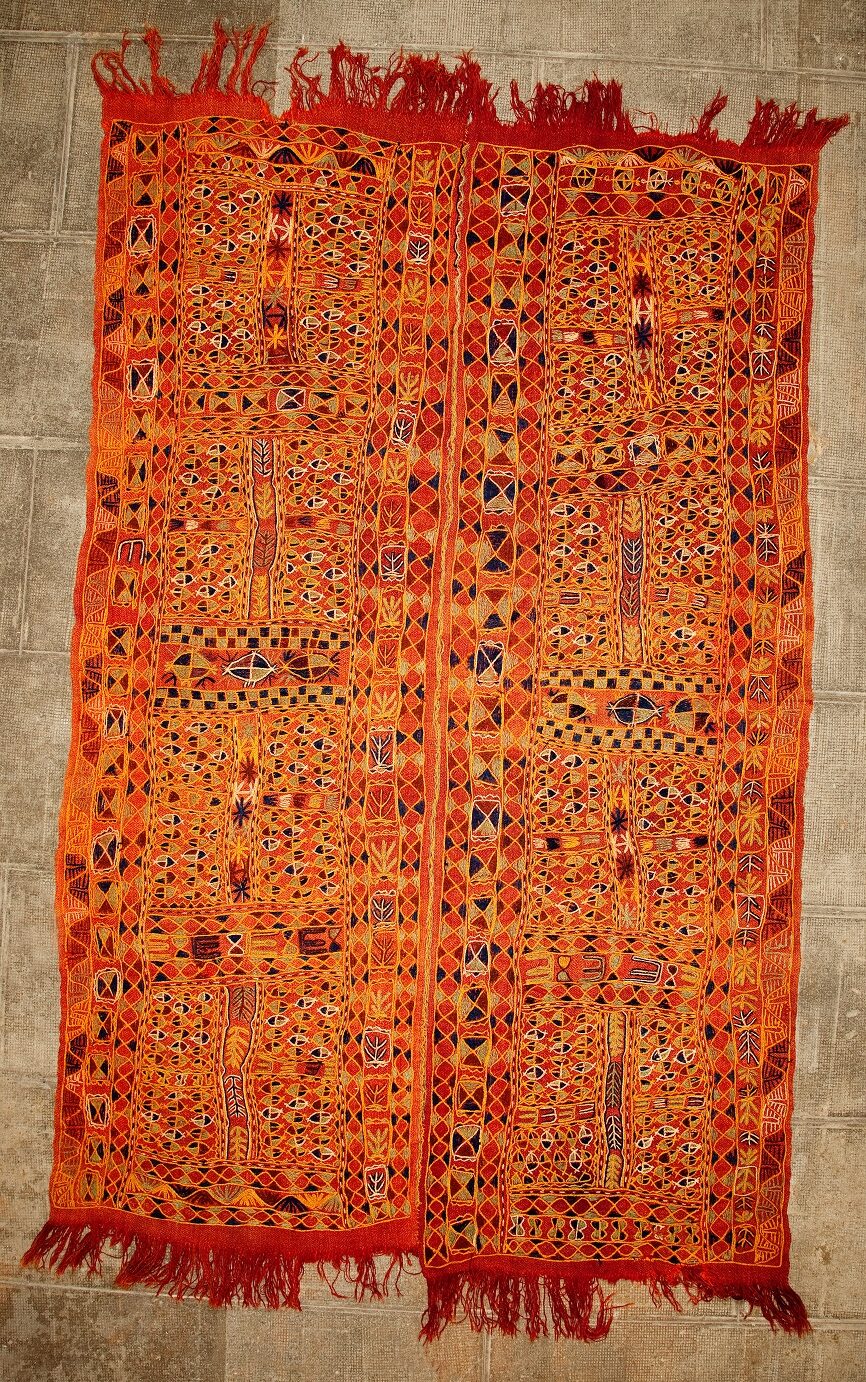
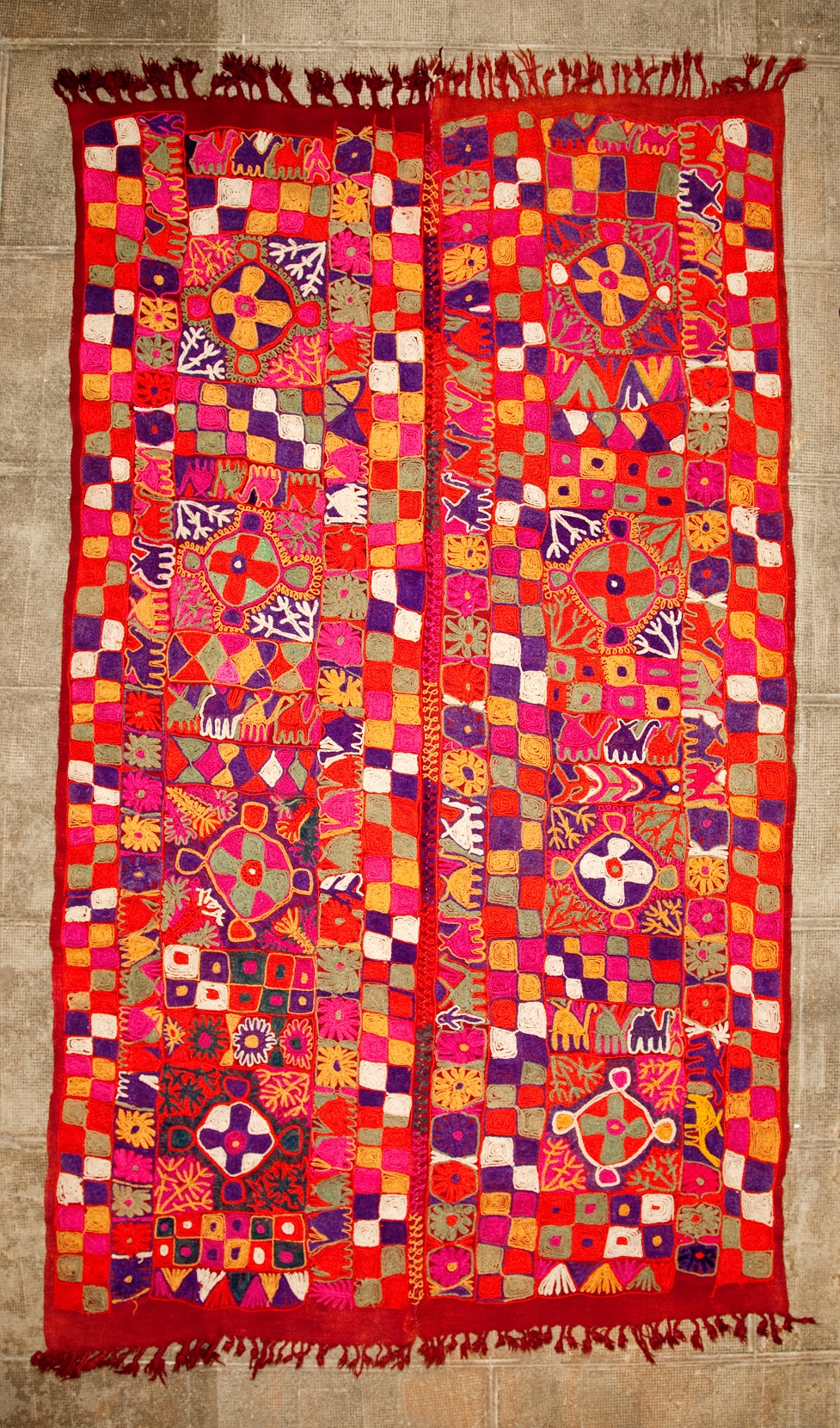
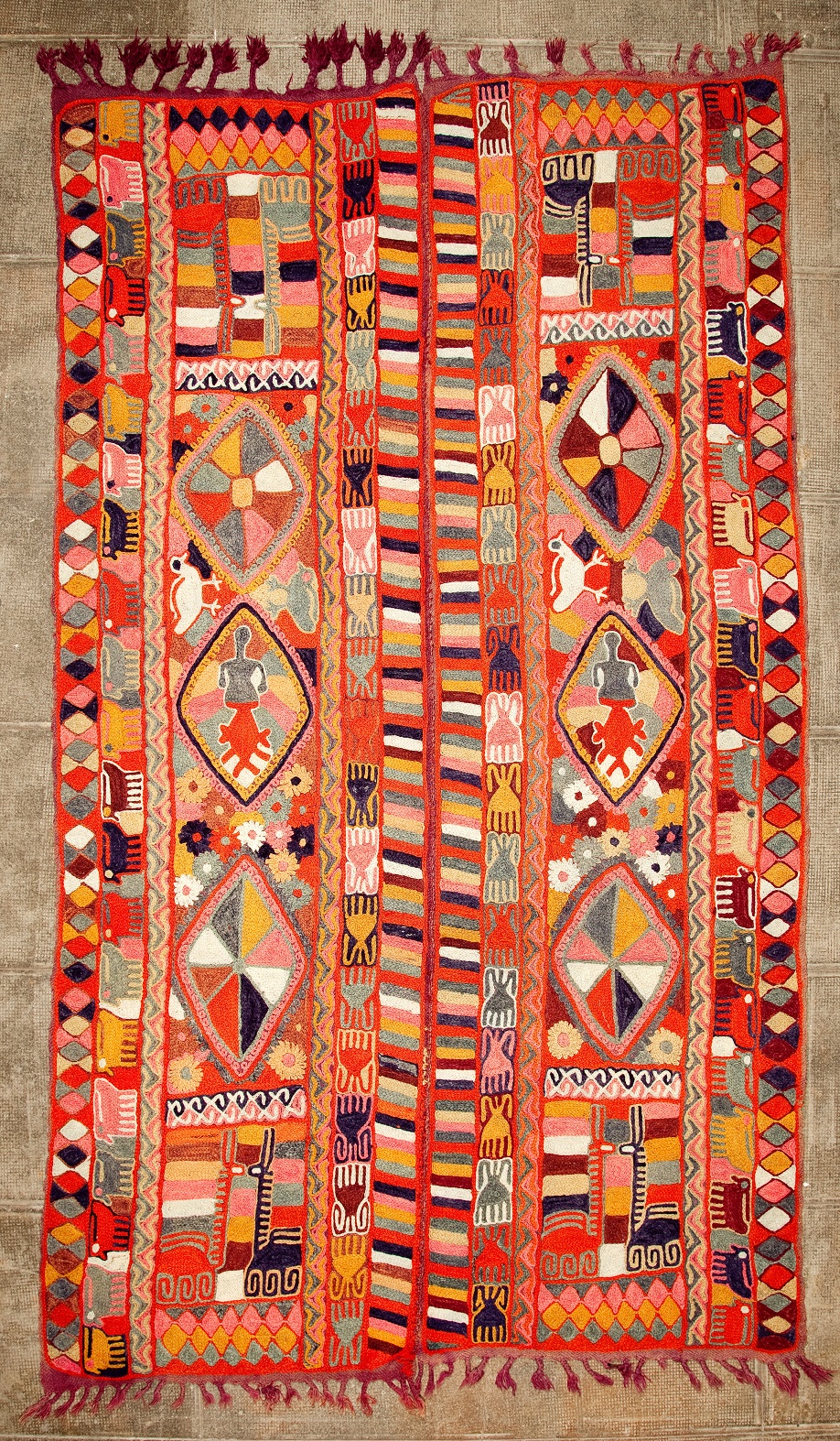
Structures
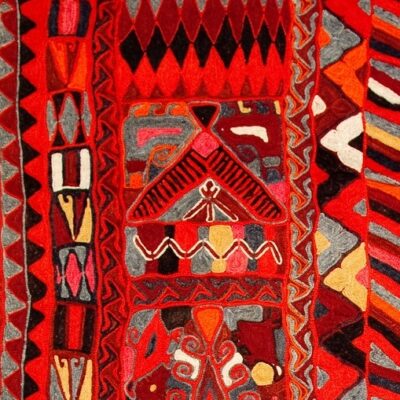
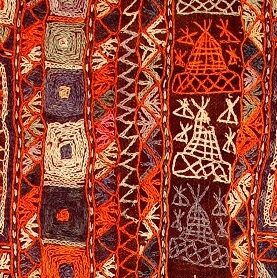
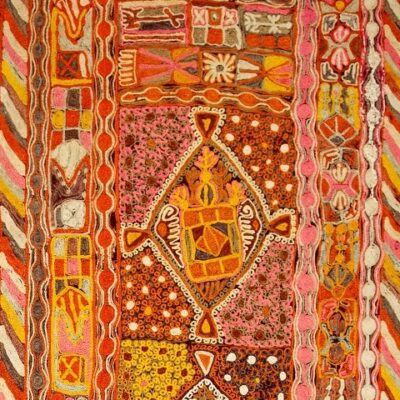
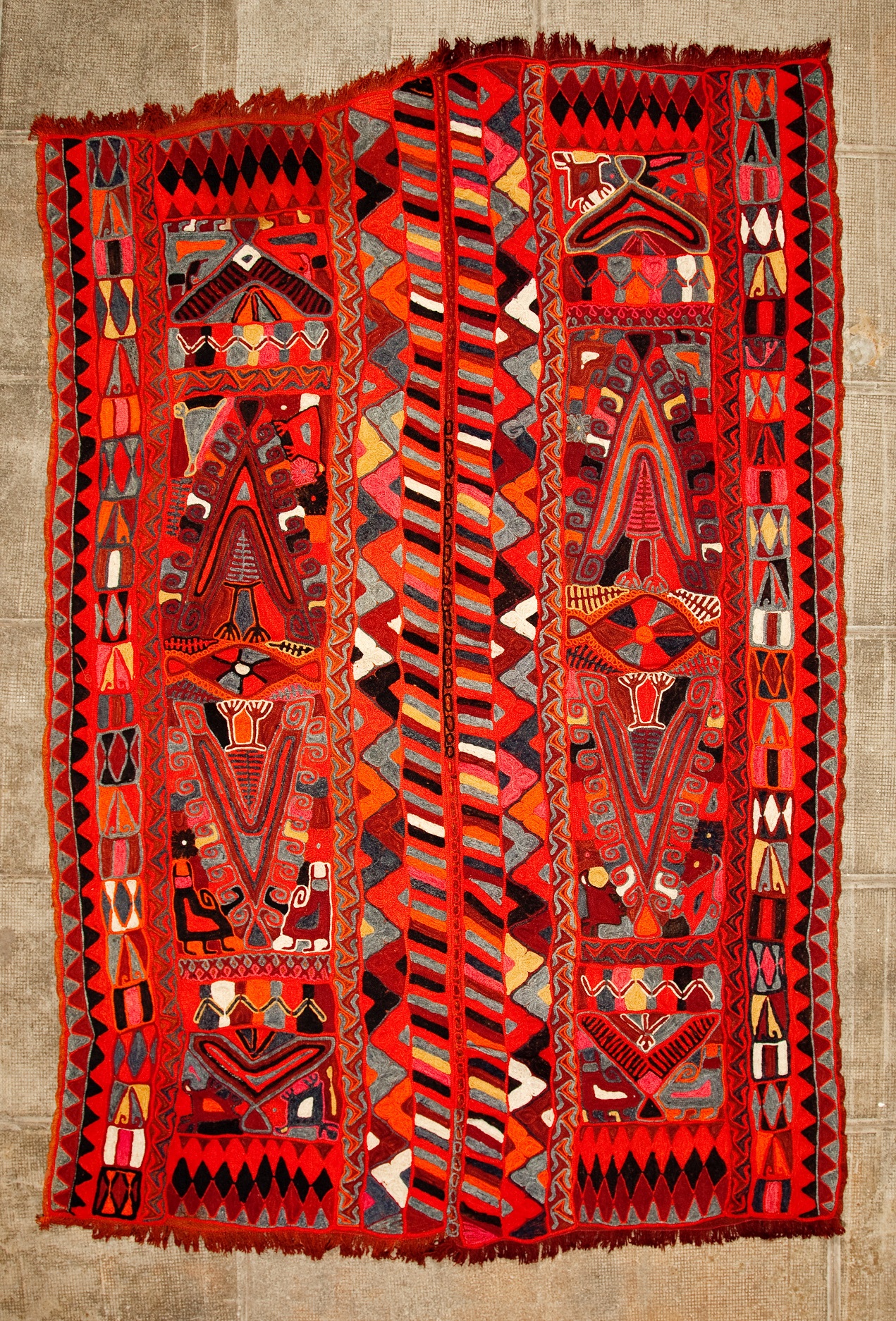
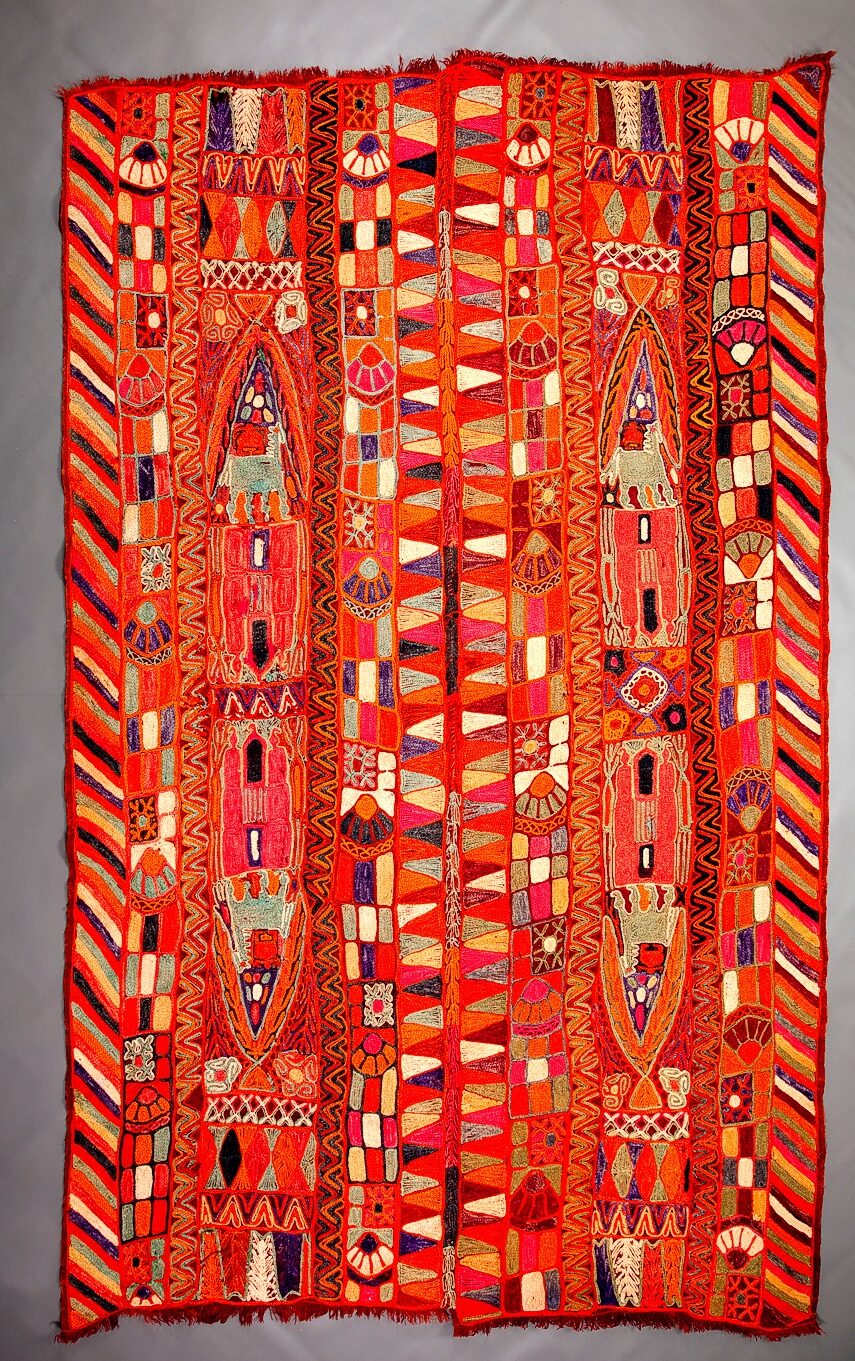
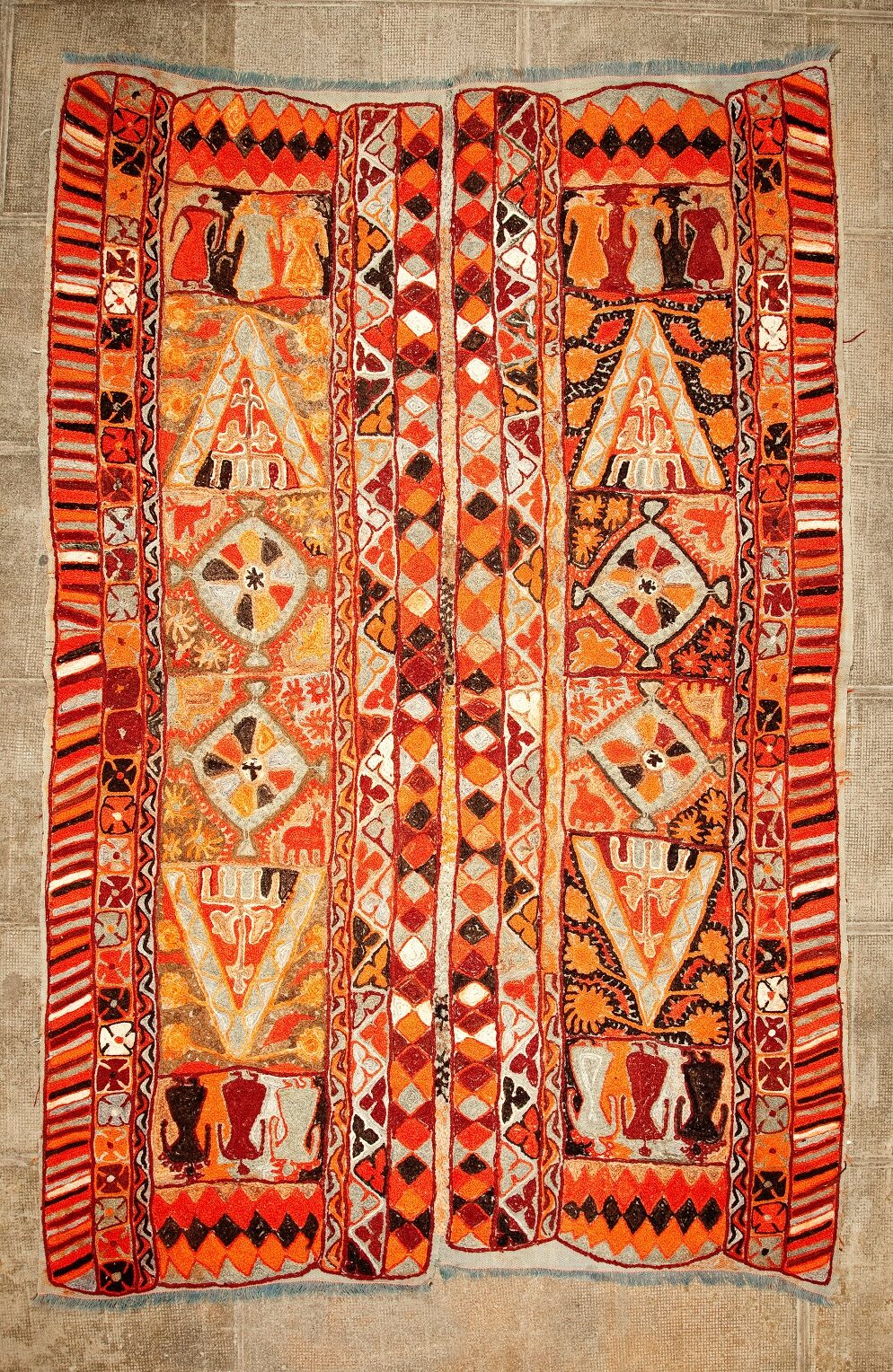
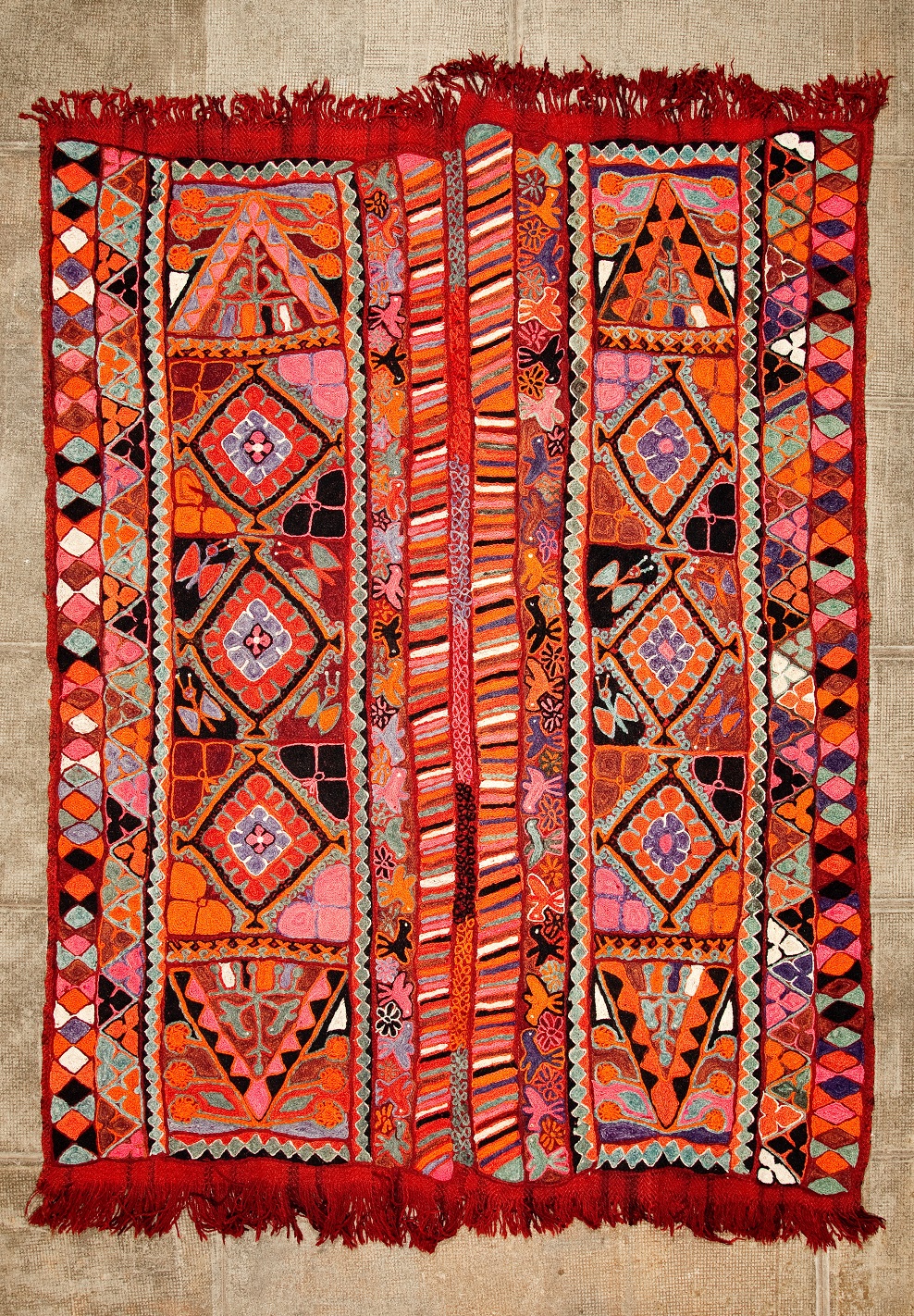
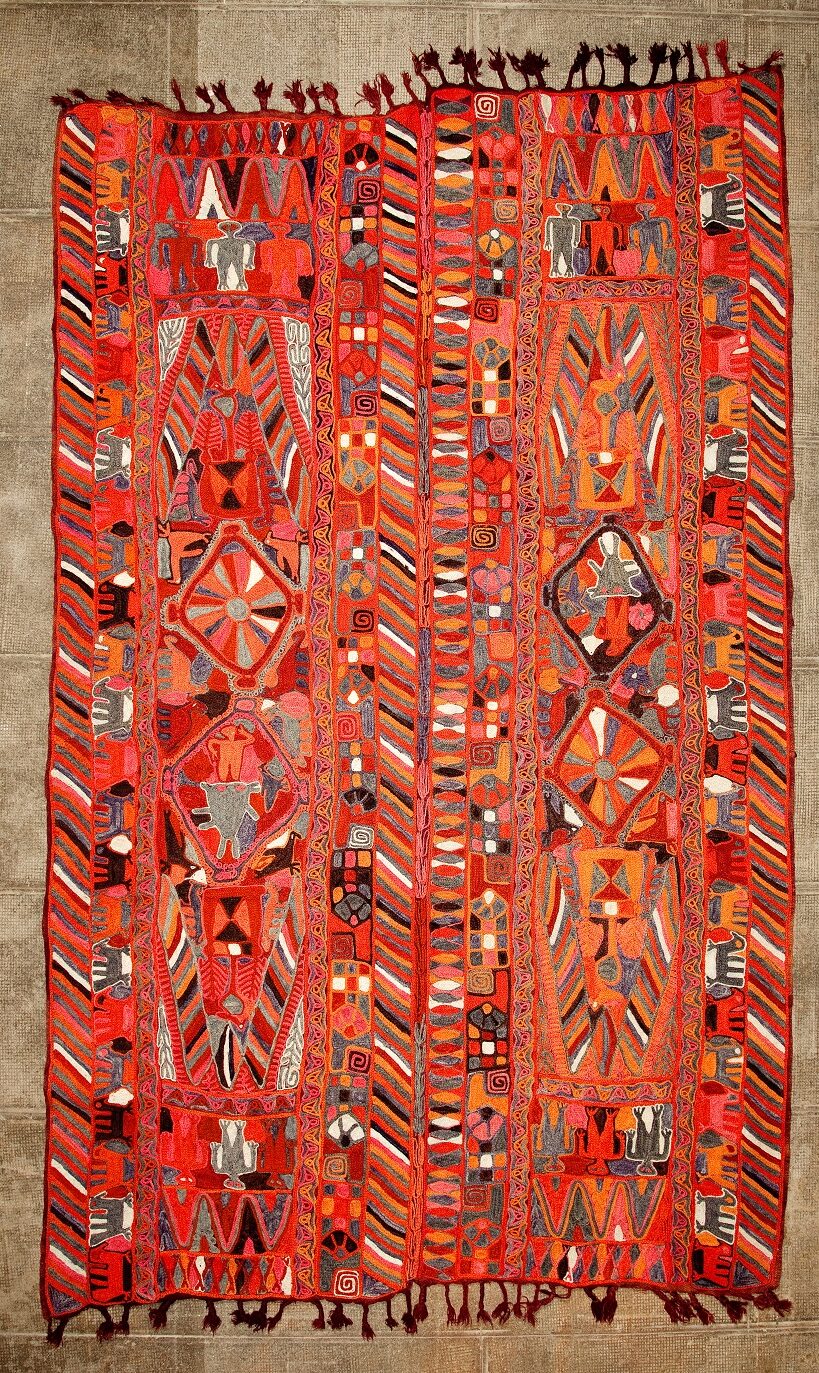
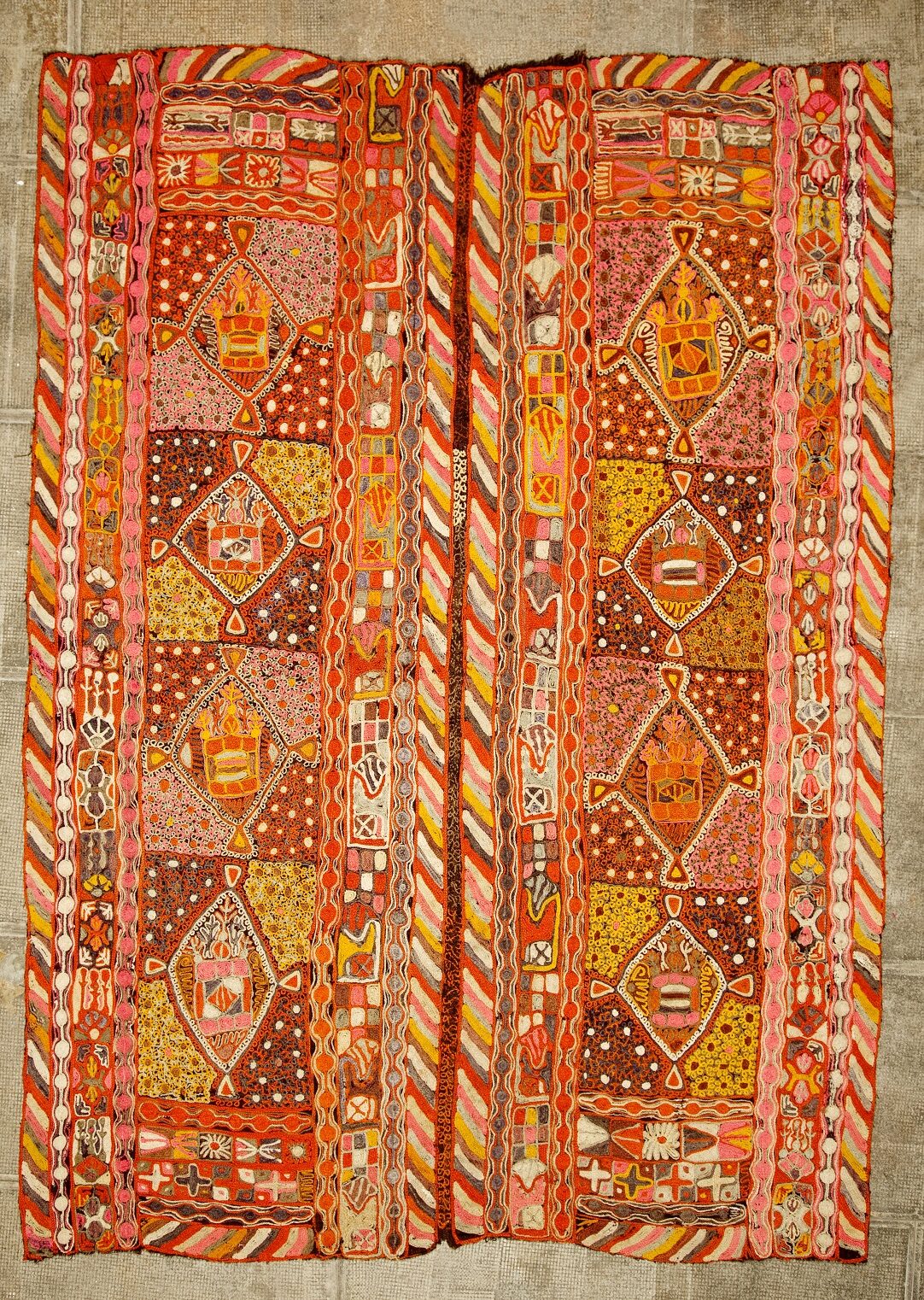

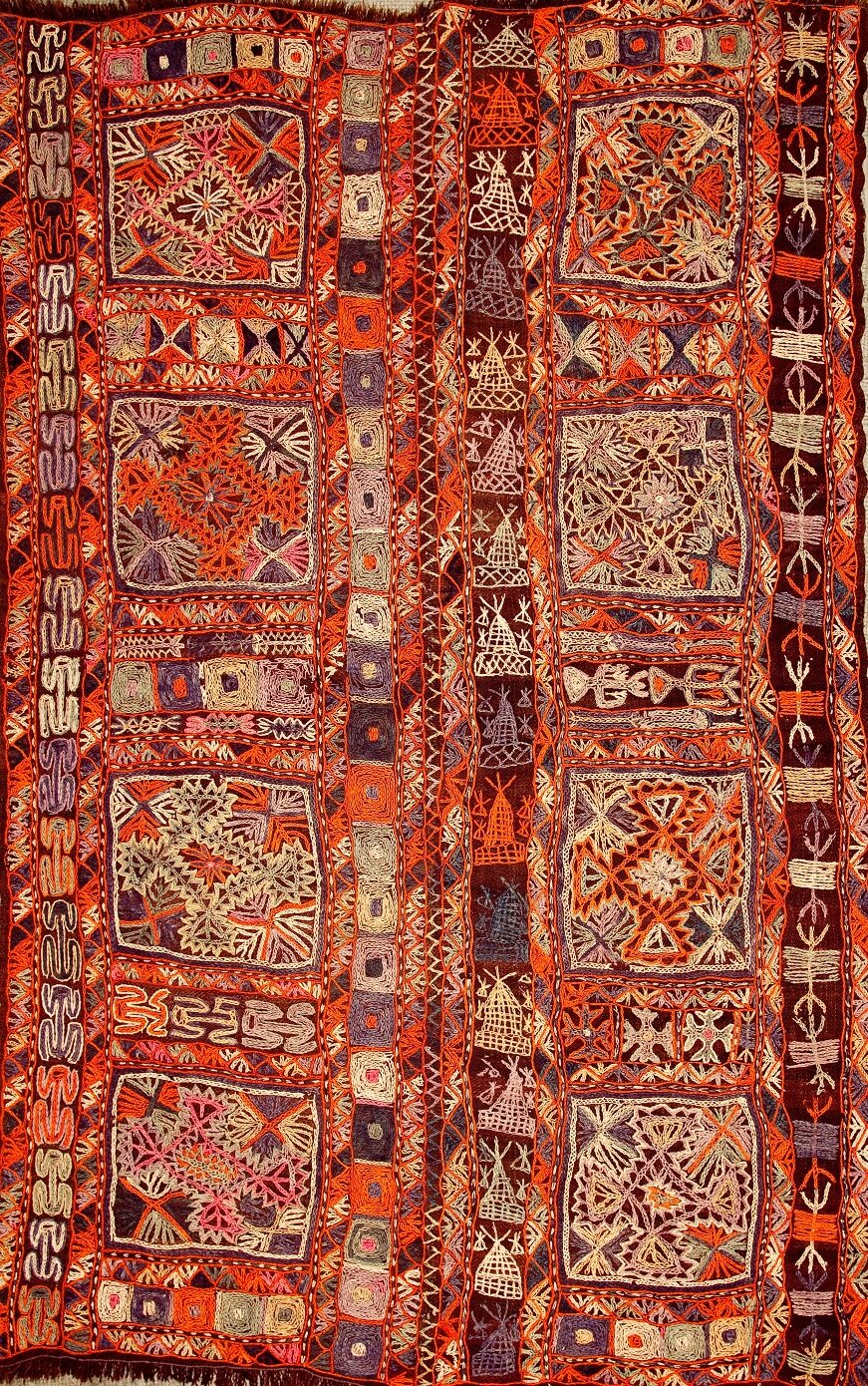

Palm Trees
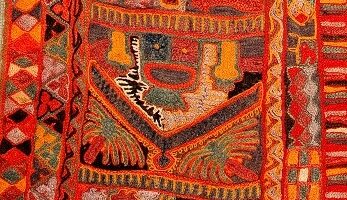
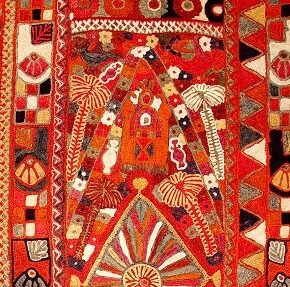
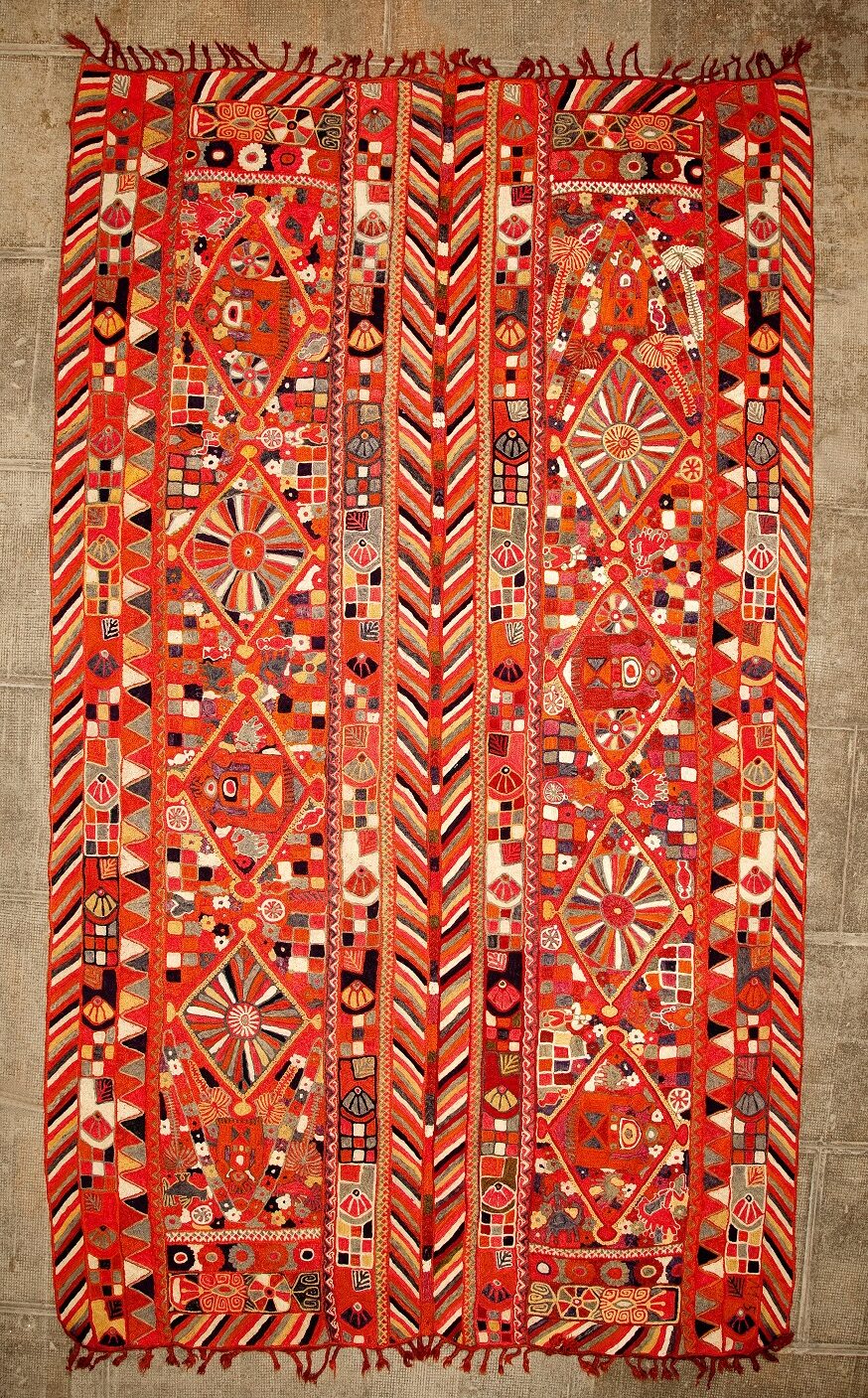
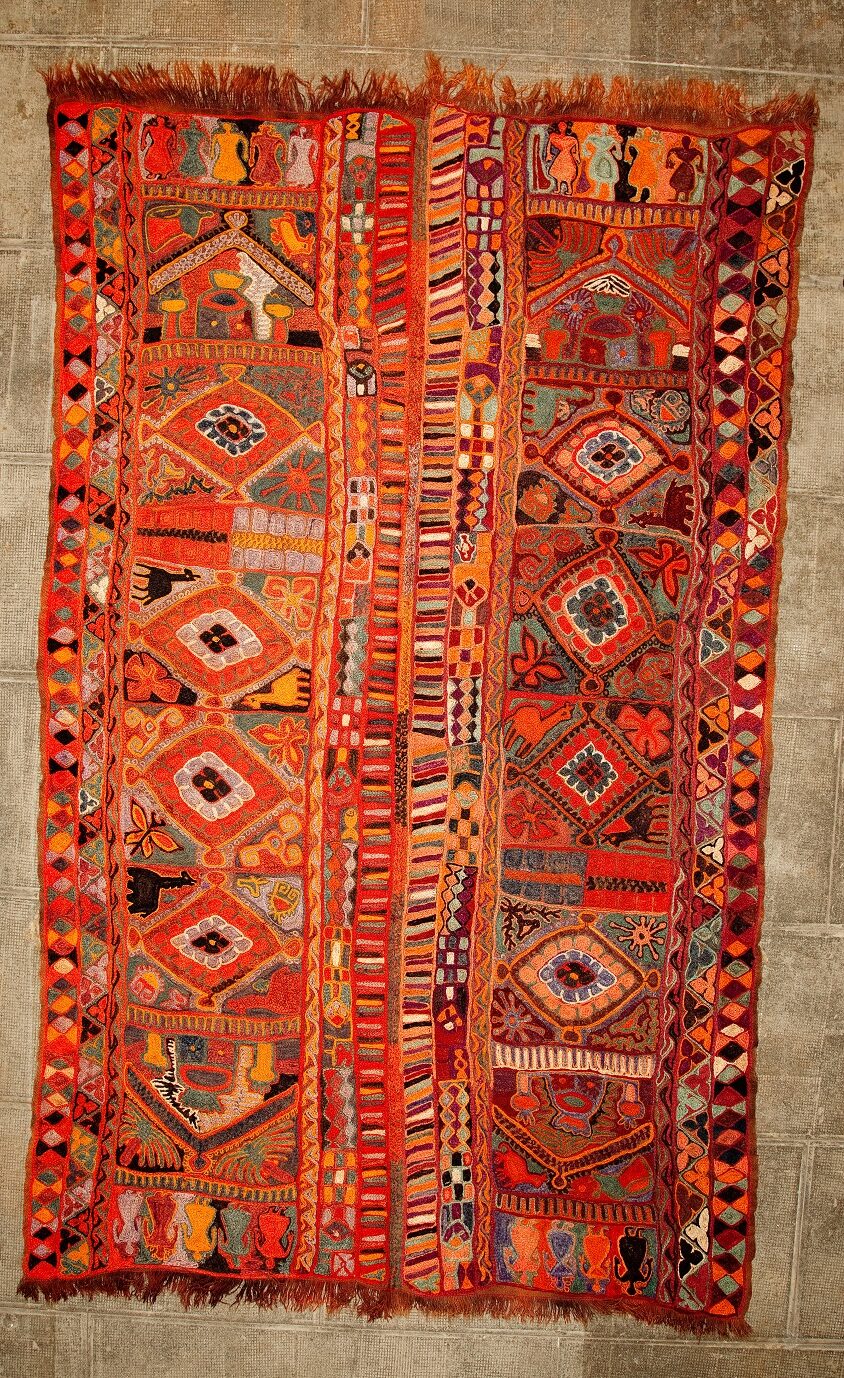
Large Patterns with a Modern Flare


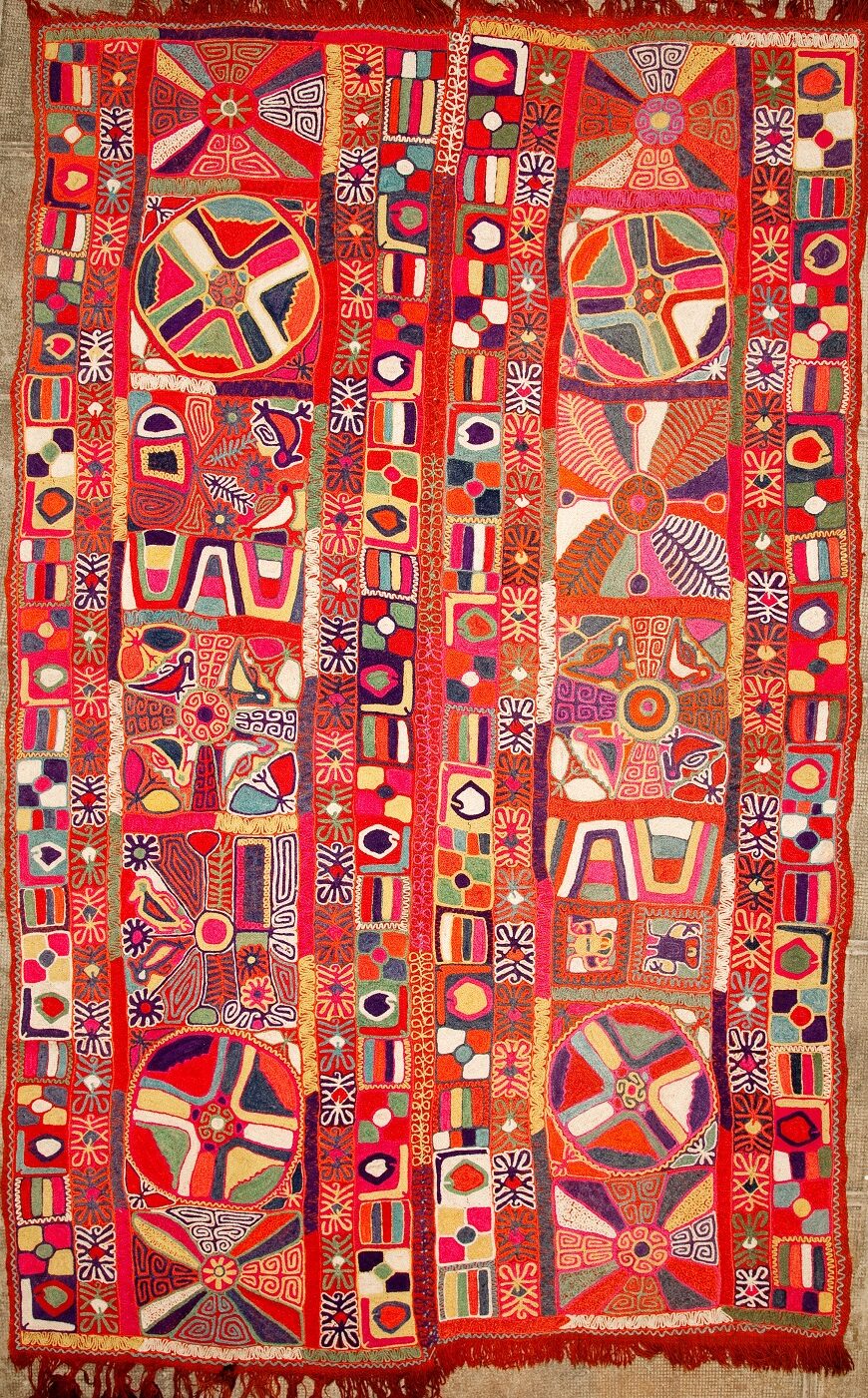
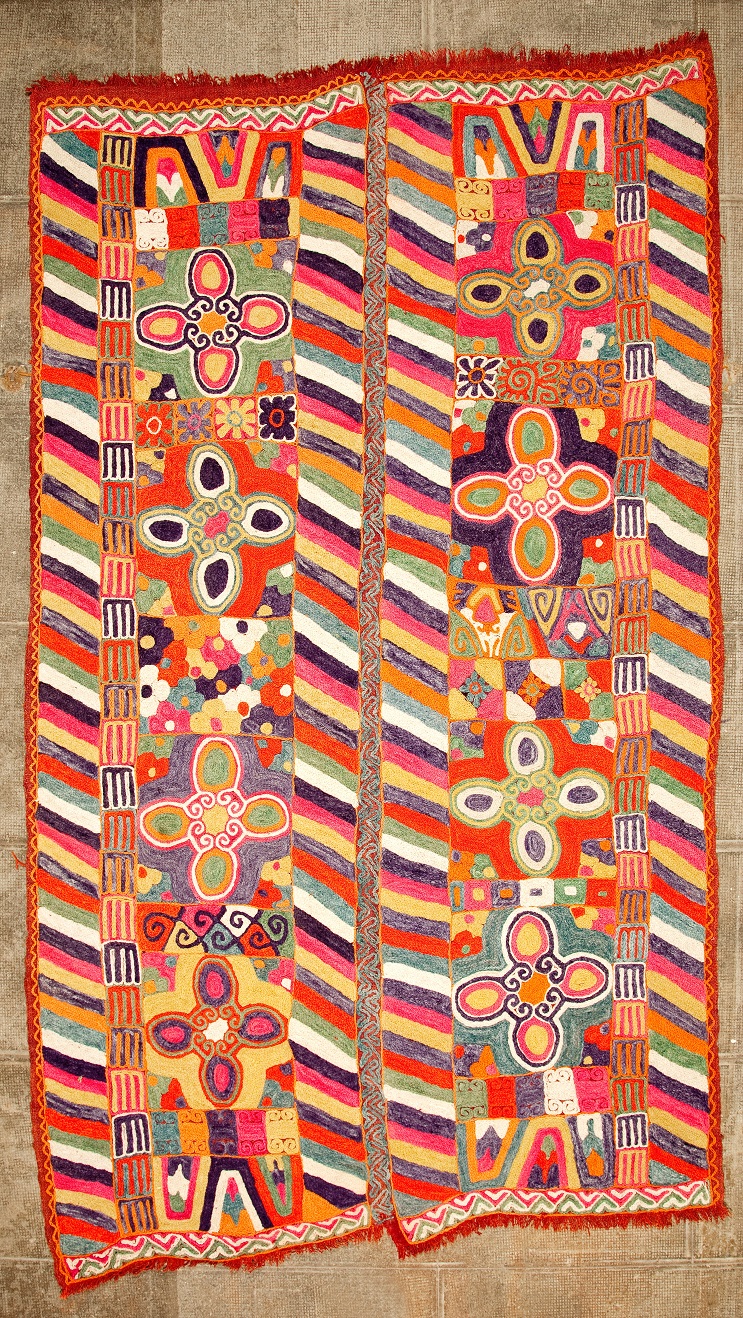


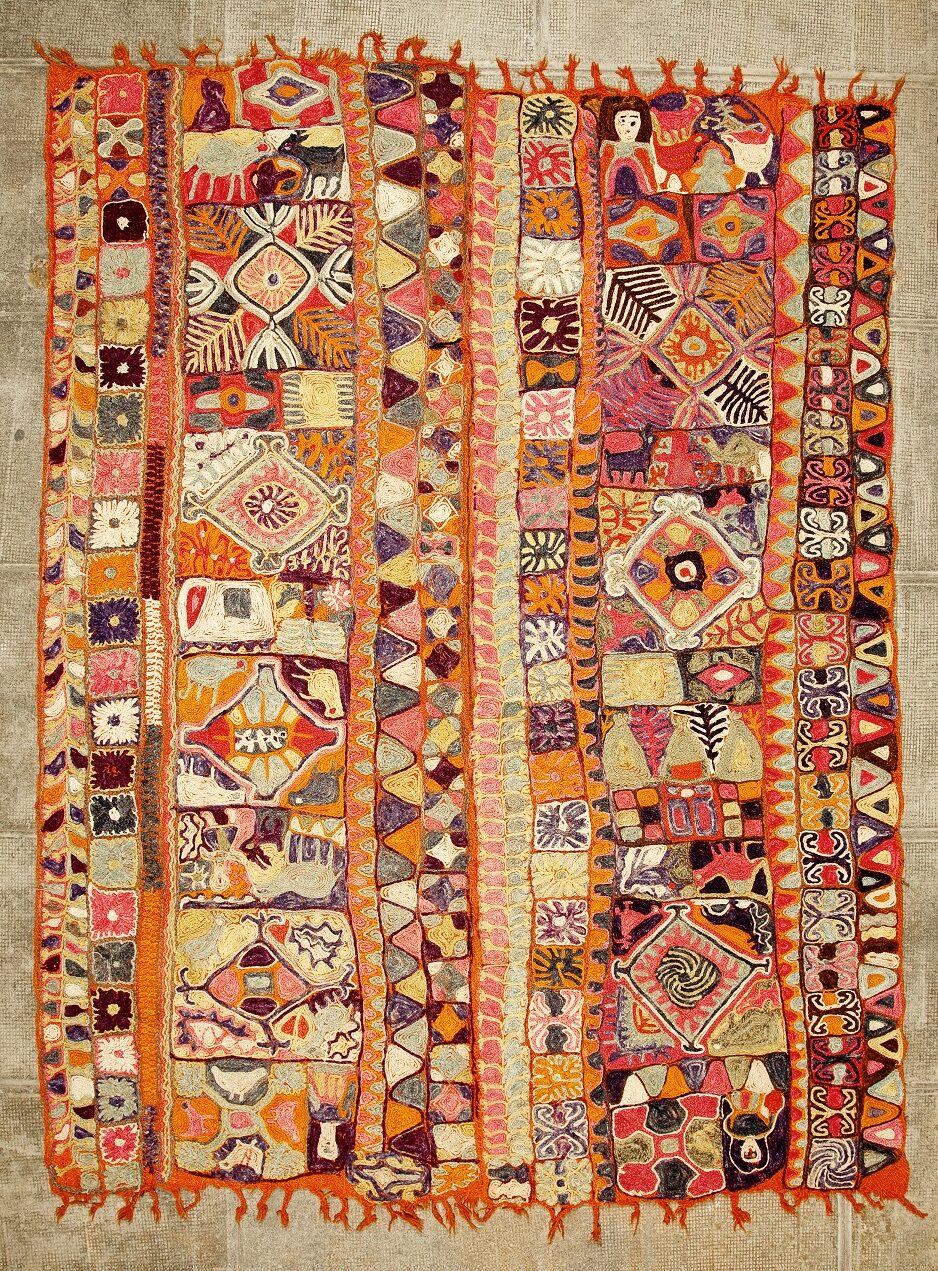
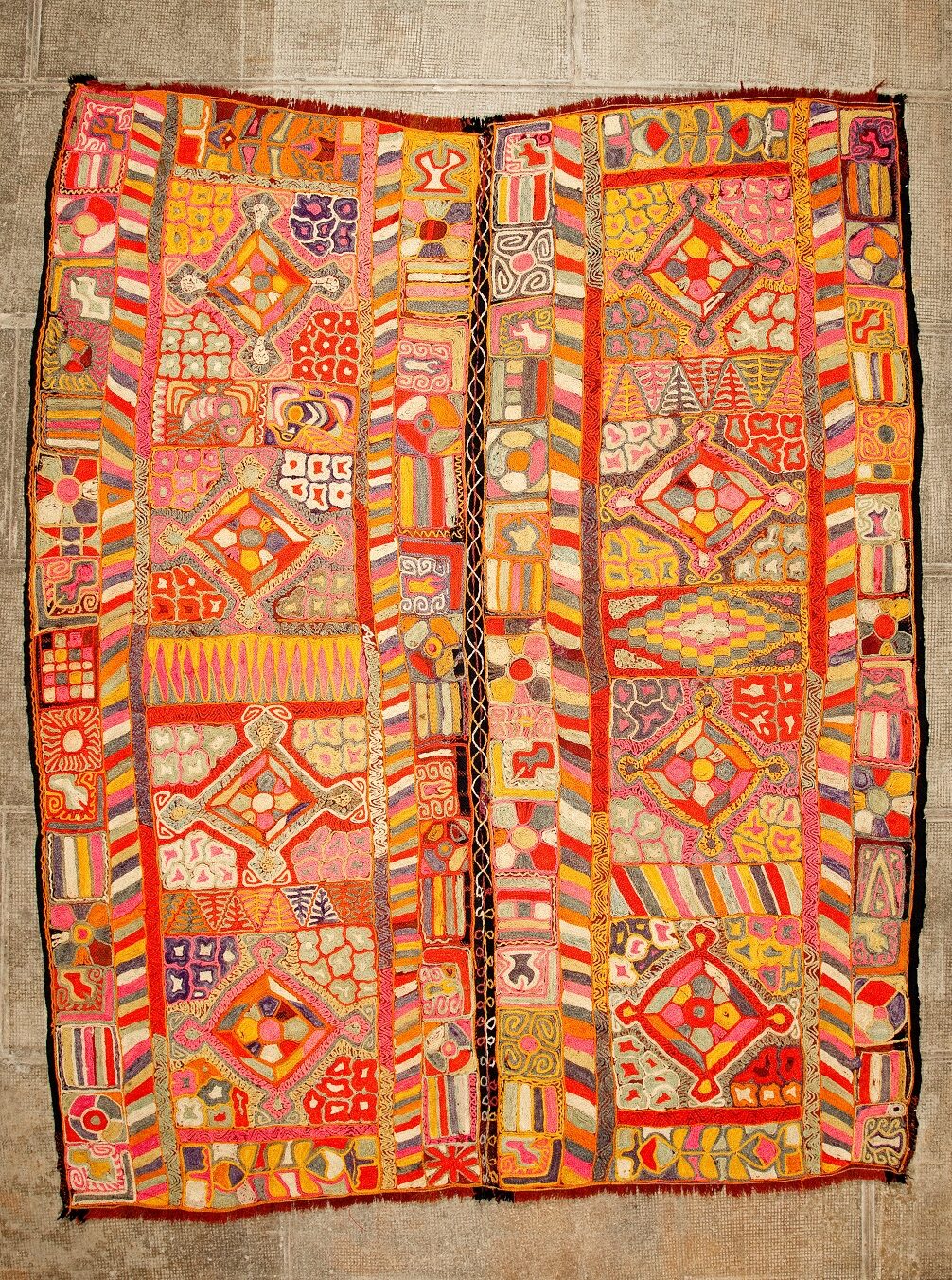
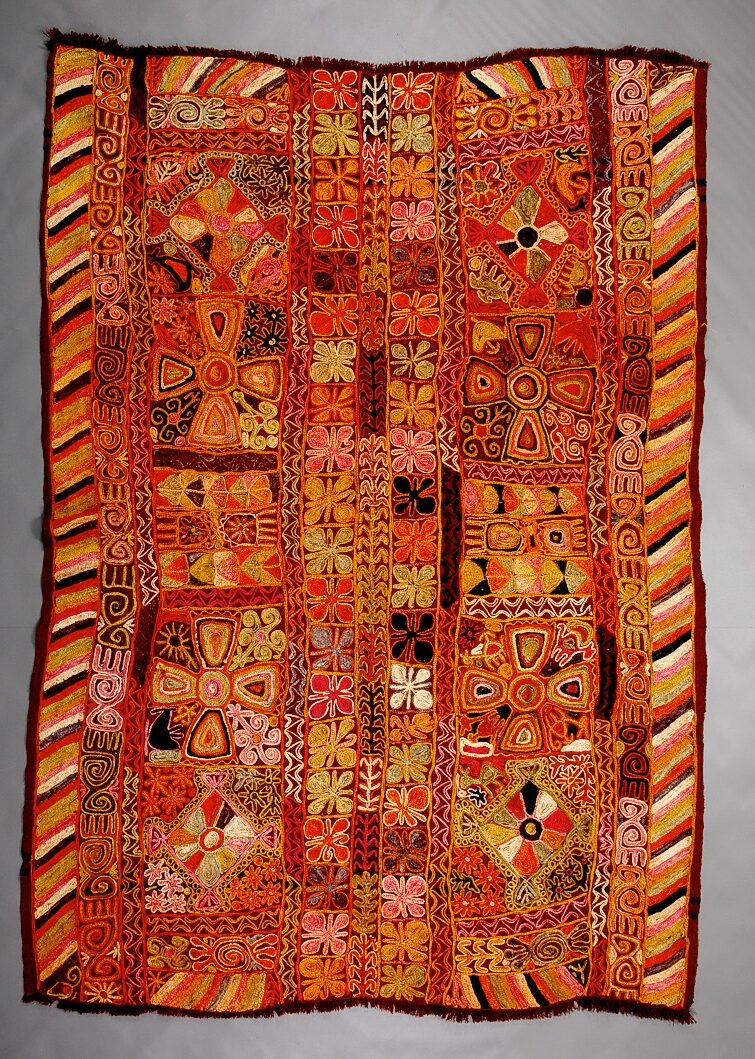
Crosses
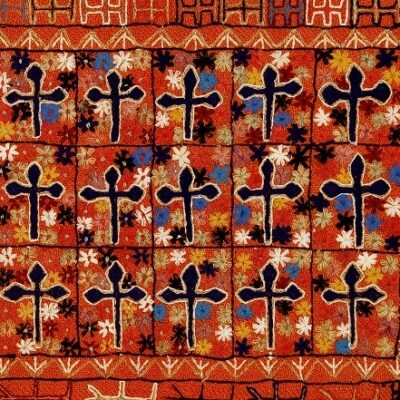
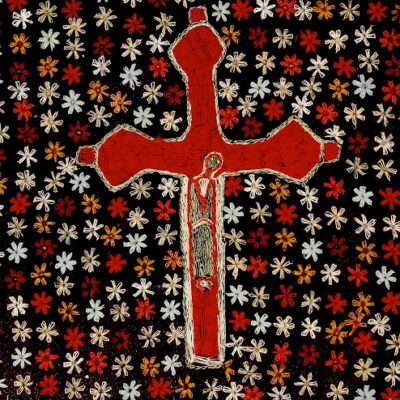

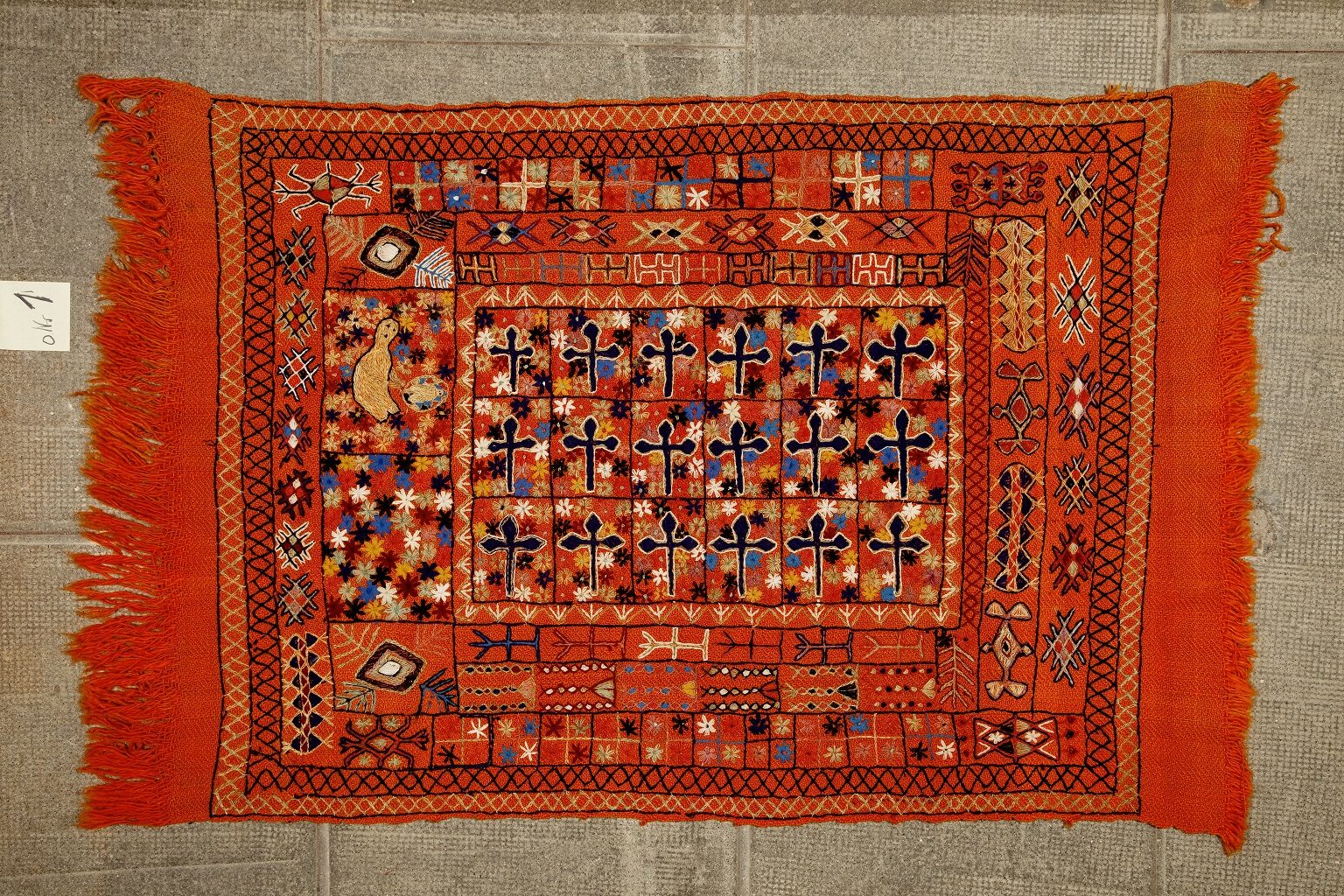
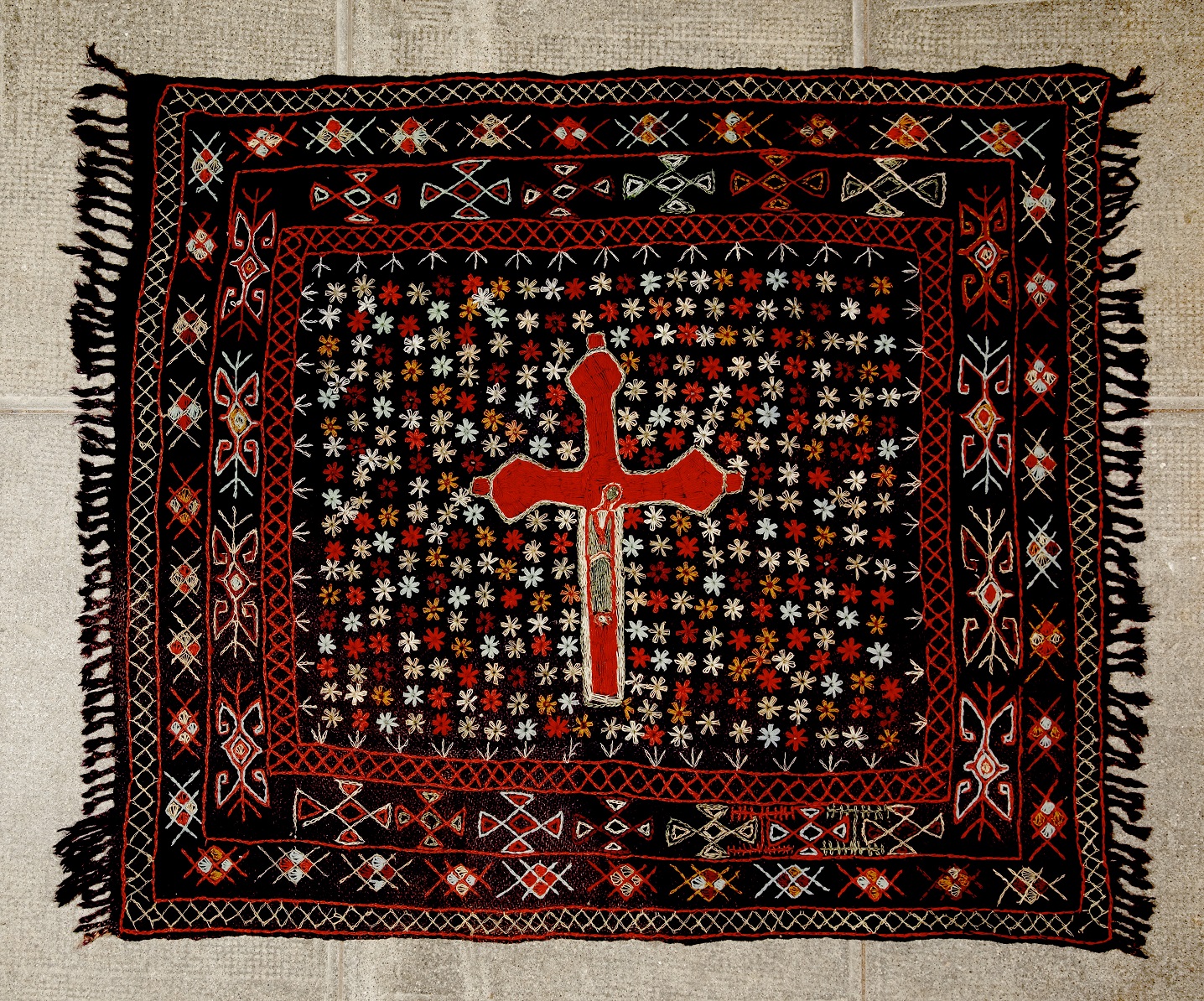
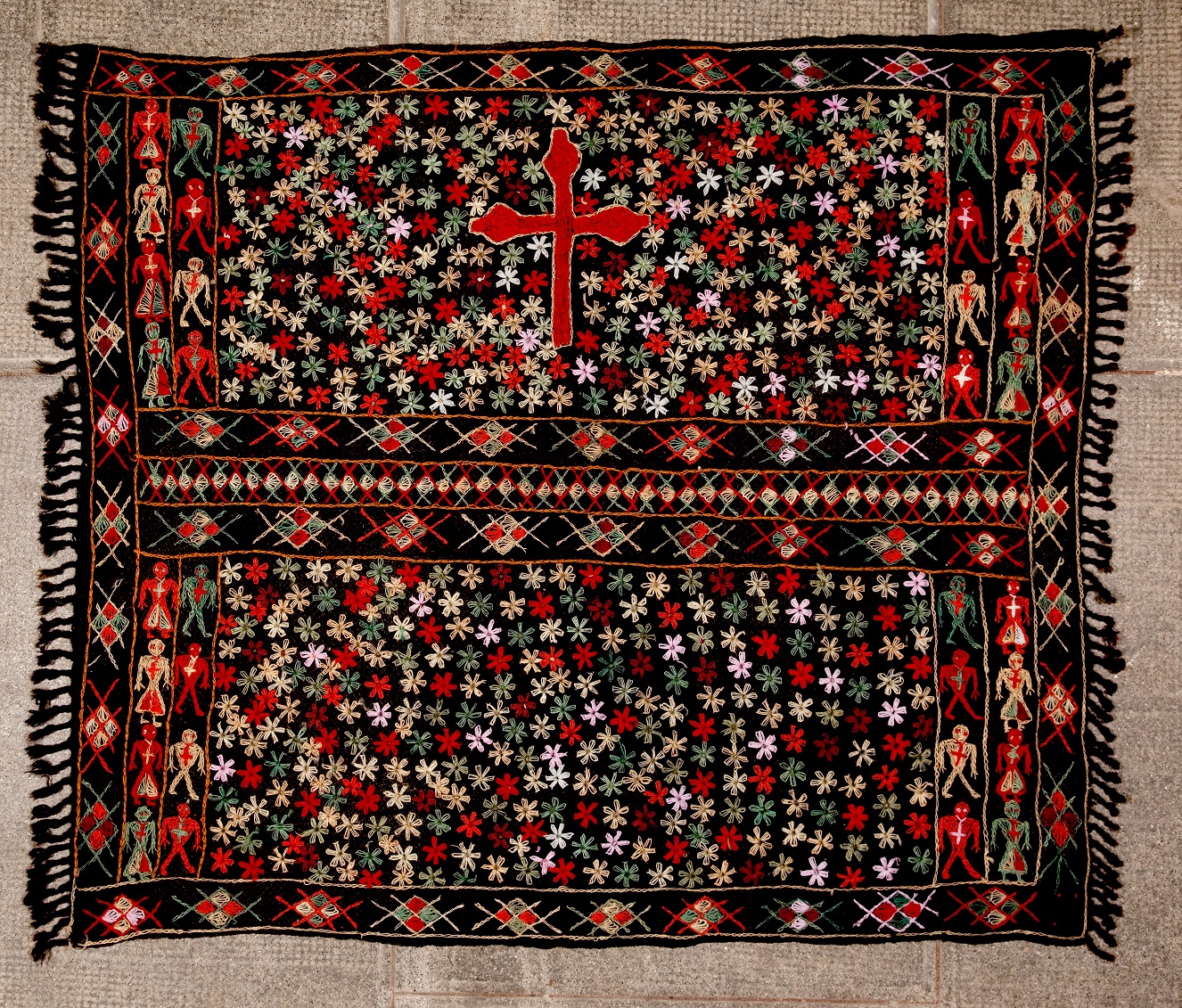
All rugs illustrated in this article are from “Gardens of Eden of Mesopotamia Collection”
Copyright Gardens of Eden of Mesopotamia
Contact
Maya Ilg, Collector of handcrafted textiles, Switzerland. milg@bluewin.ch
Annamarie Stockli, Researcher of handcrafted textiles, Switzerland. calancasca@bluewin.ch
Notes
- (*) Treasures from the Royal Tombs of Ur. University of Pennsylvania Museum of Archeology and Anthropology. 1998 . Image courtsy of the Vorderasiatisches Museum, Berline.
- (**) Treasures from the Royal Tombs of Ur. University of Pennsylvania Museum of Archeology and Anthropology. 1998. Puabi’s tomb chamber with Puabi.
- (***) Cylinder seal, The Trustee of the British Museum.
- (****) Roaf, Michael, Cultural Atlas of Mesopotamia and the Ancient Near East. 1990.
Bibliography
- Thesiger, W. ‘The Marsh Arabs’, 1964.
- Westphal-Hellbusch, Dr. Sigrid, ‘Die Ma’dan: Kultur und Geschichte der Marschenbewohner im SüdIraq’. Berlin, 1962.
- Orchsenschlager, Edward L., ‘Iraq’s Marsh Arabs in the Garden of Eden’, 2004.
- Young, Gavin, and Photography Wheeler, Nik, ‘Return to the Marshes’, 1977.

